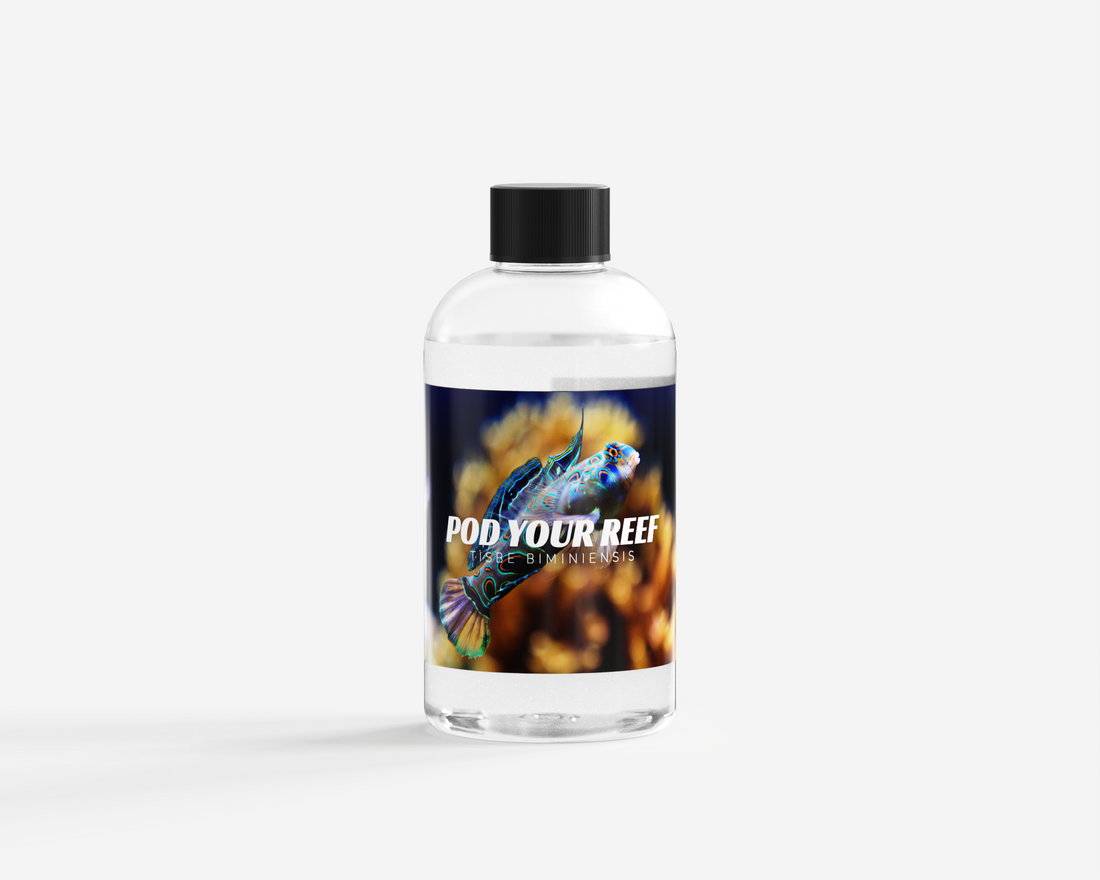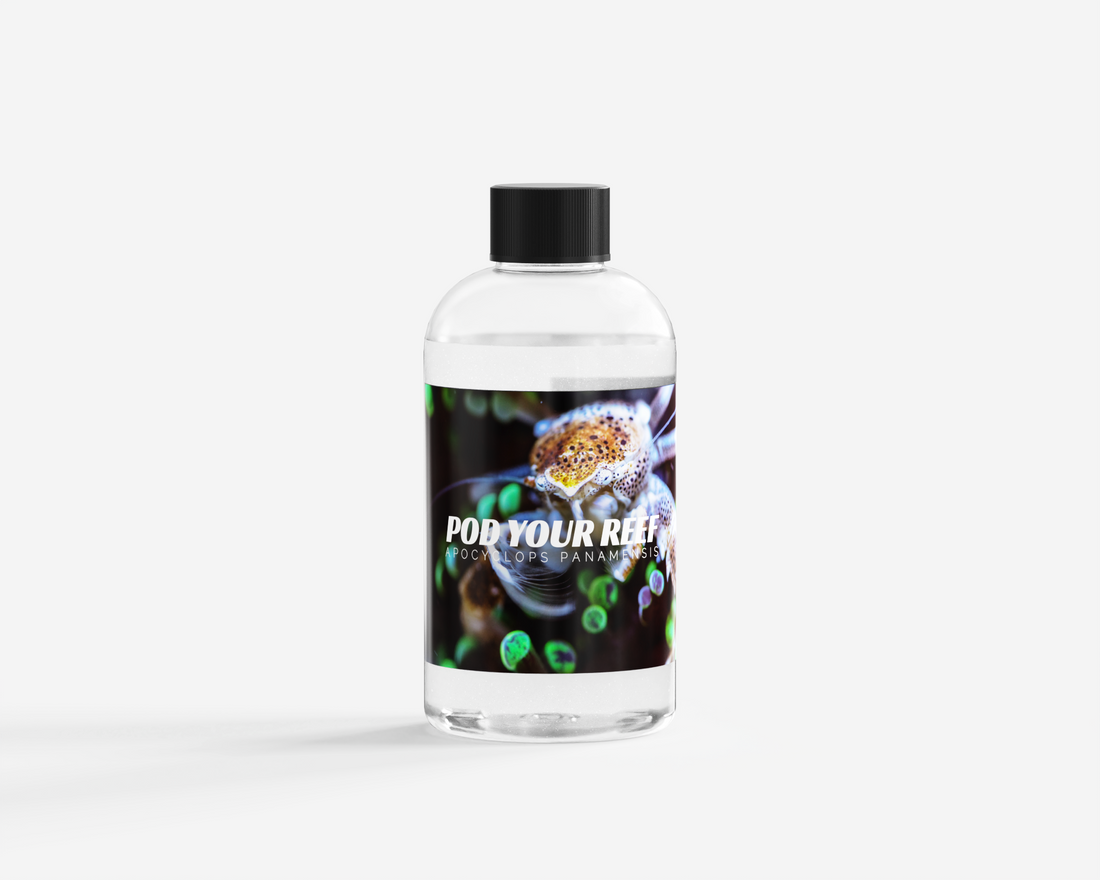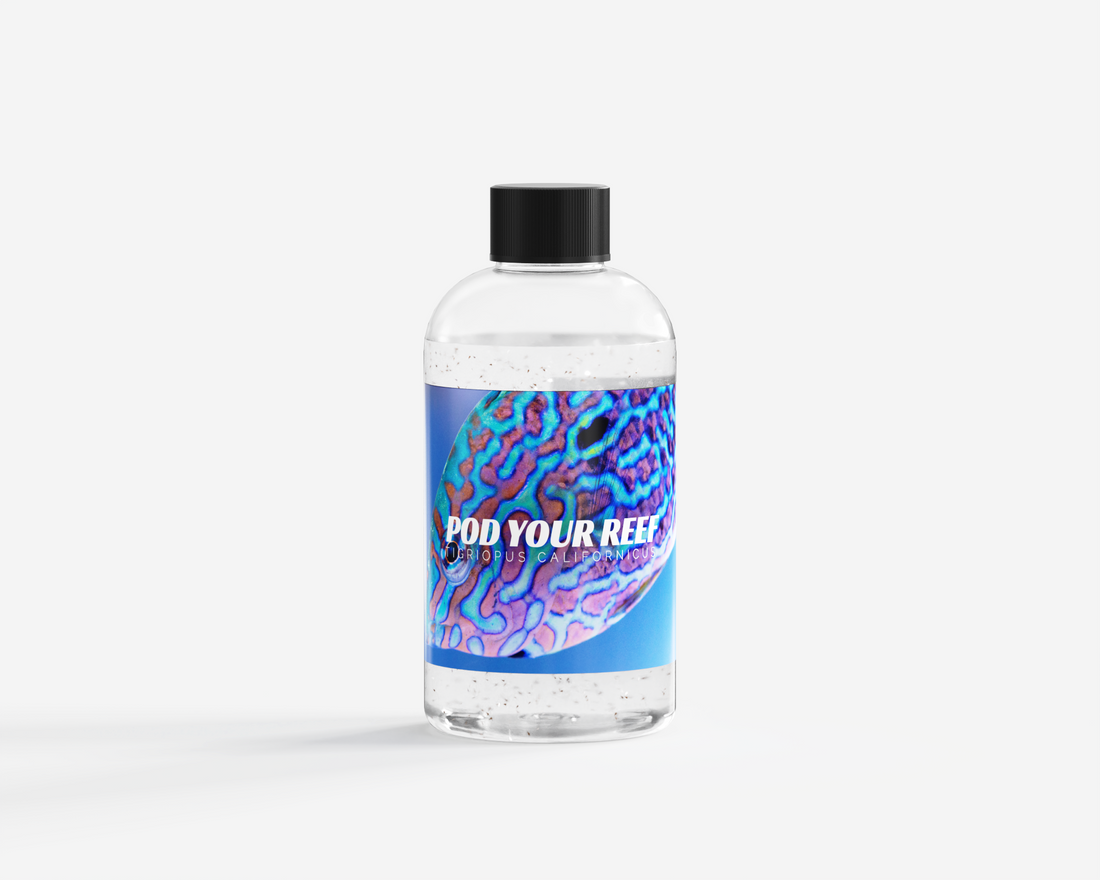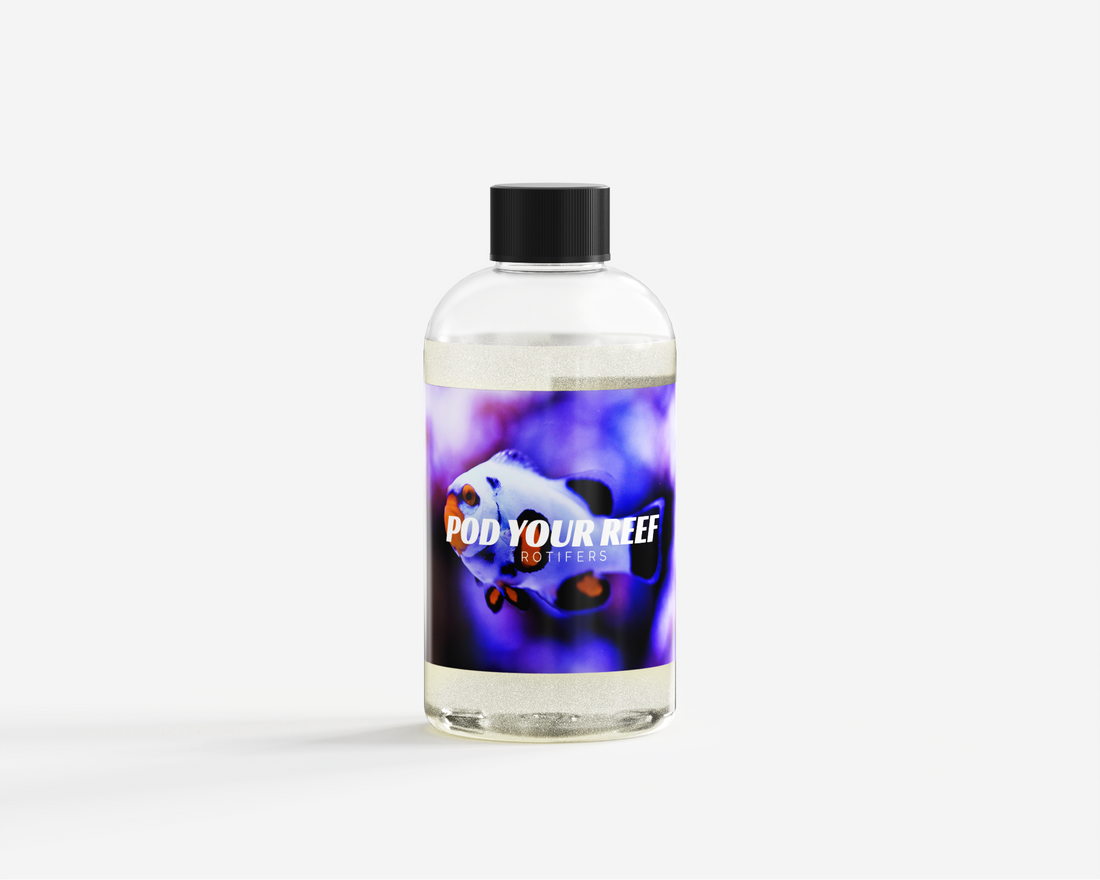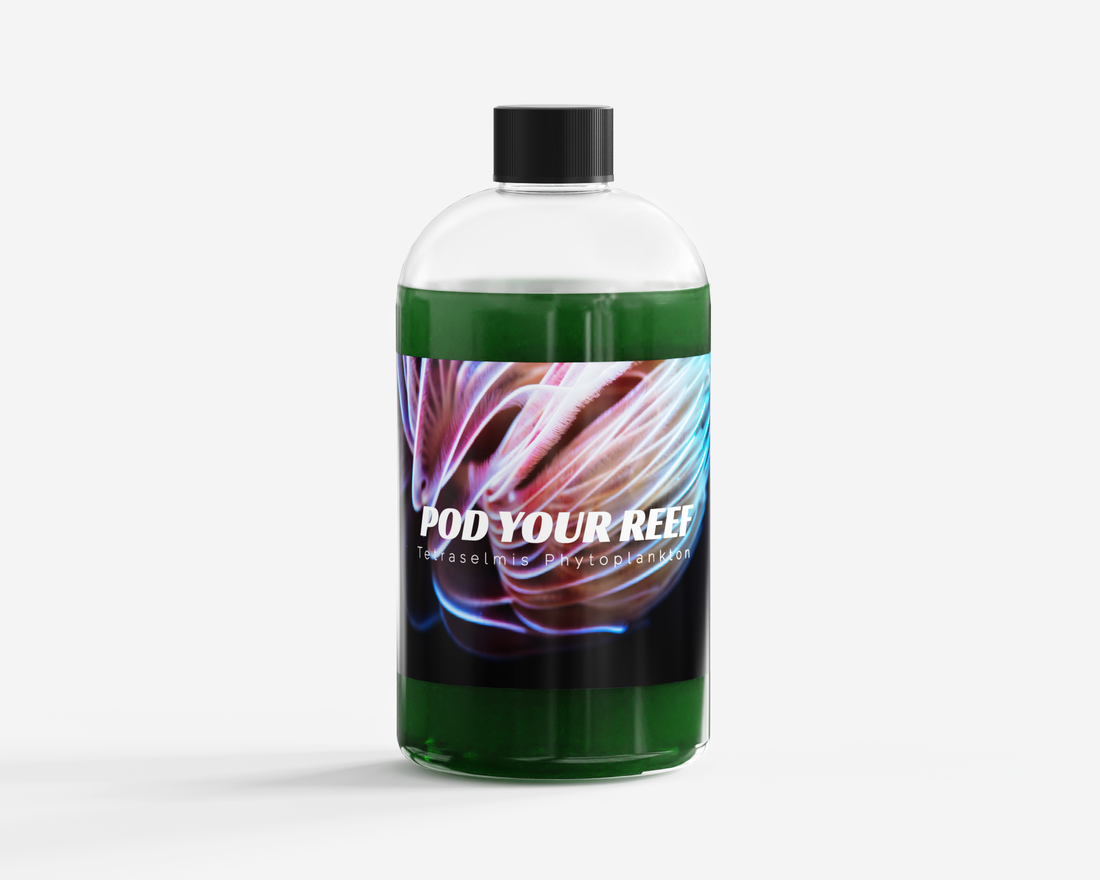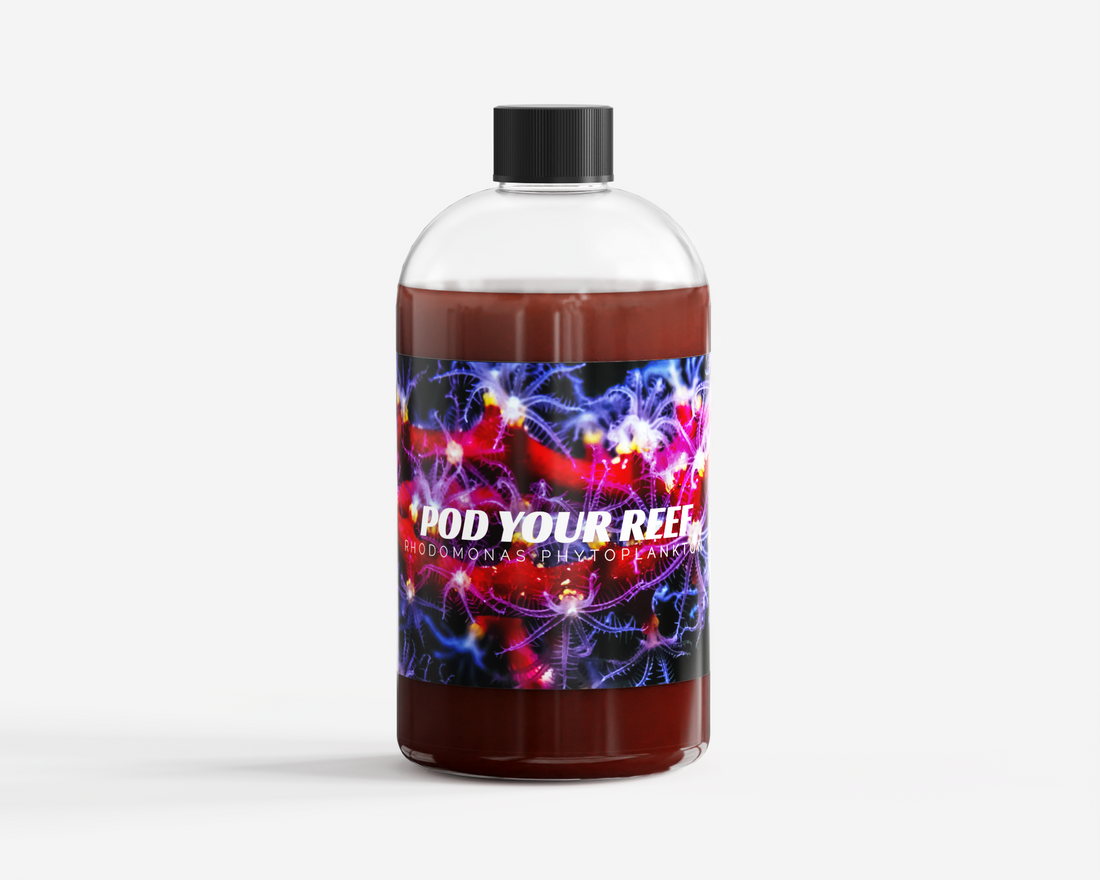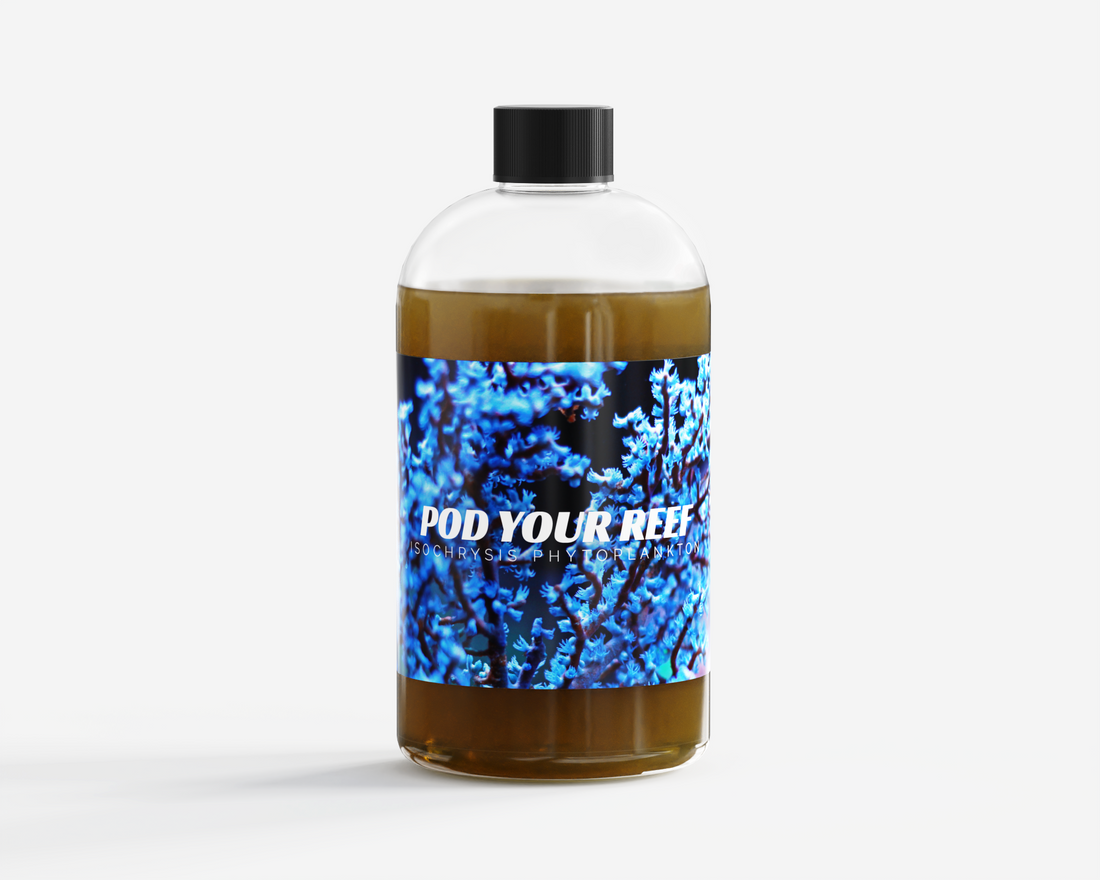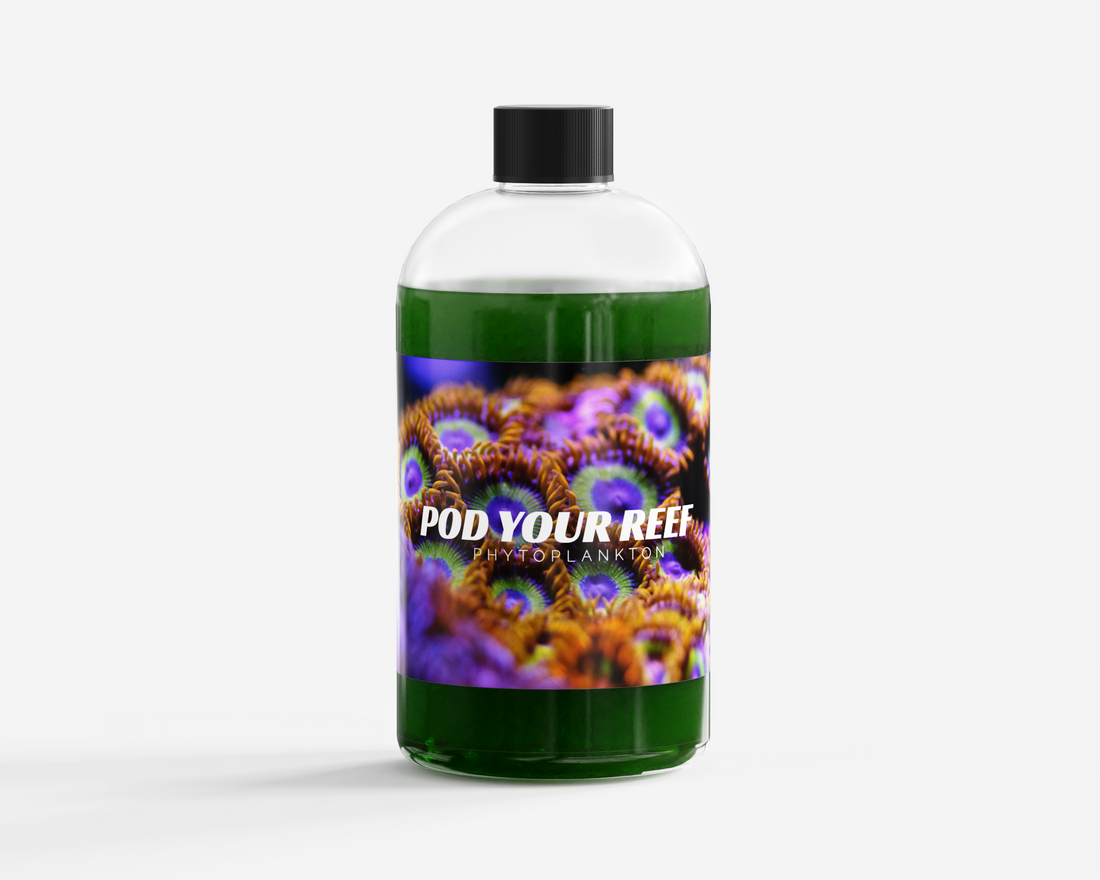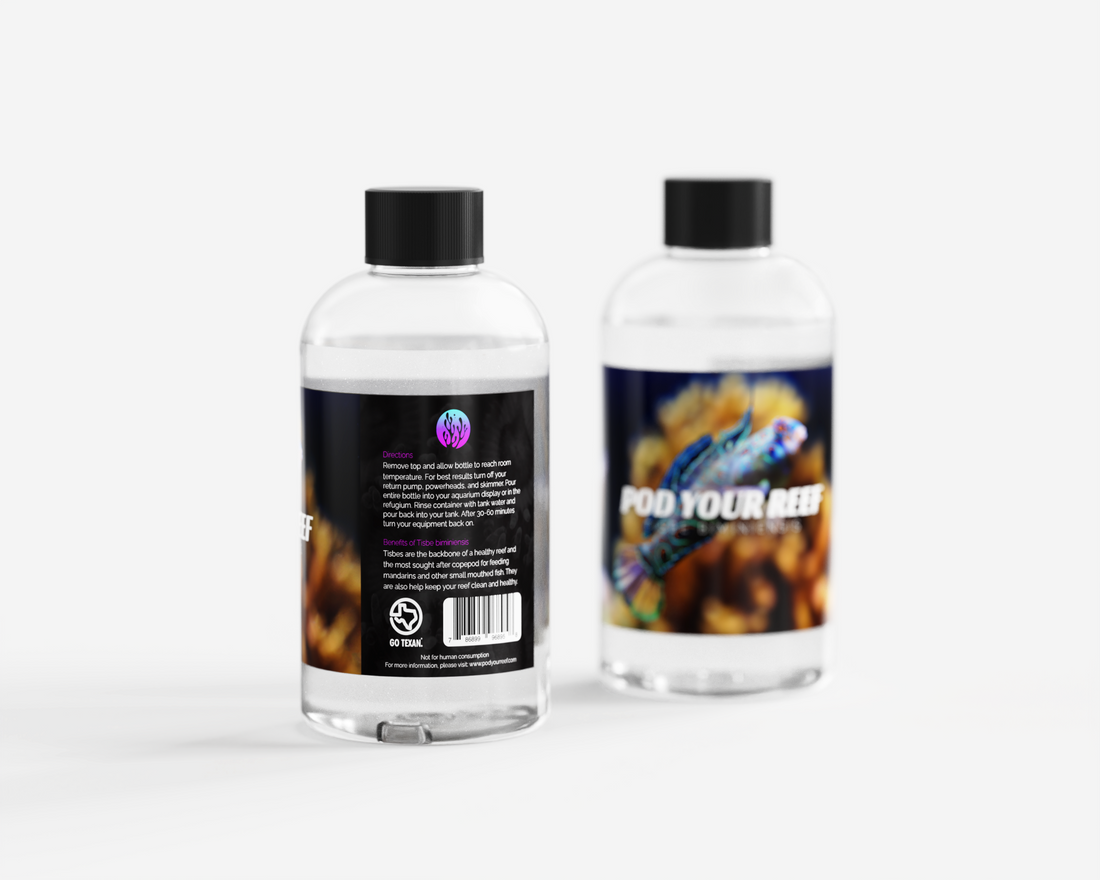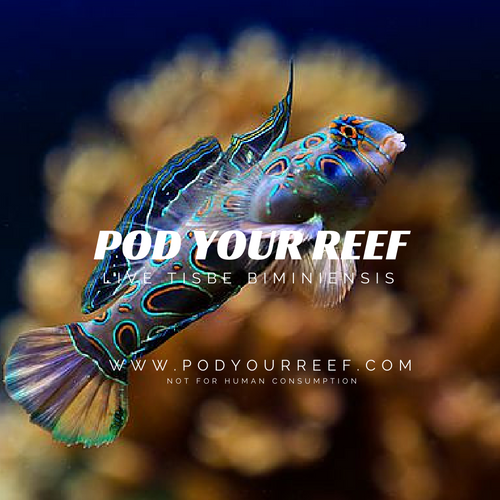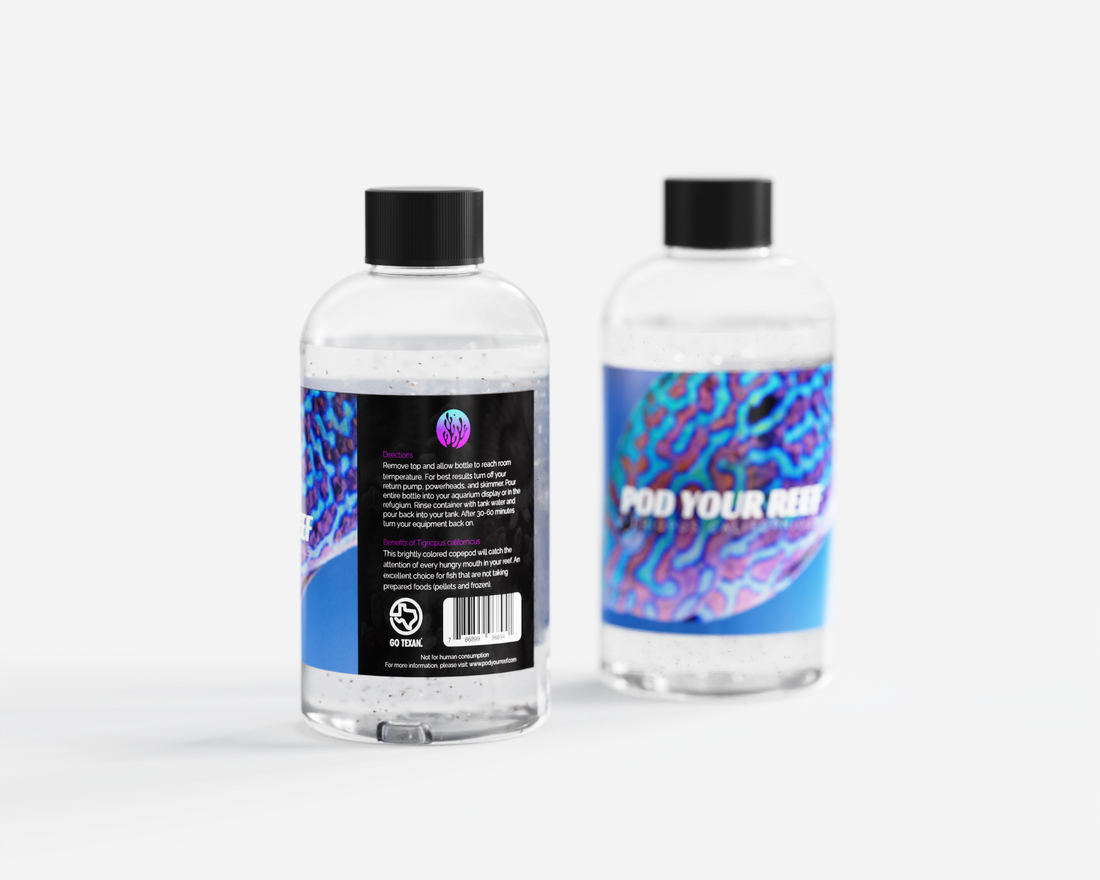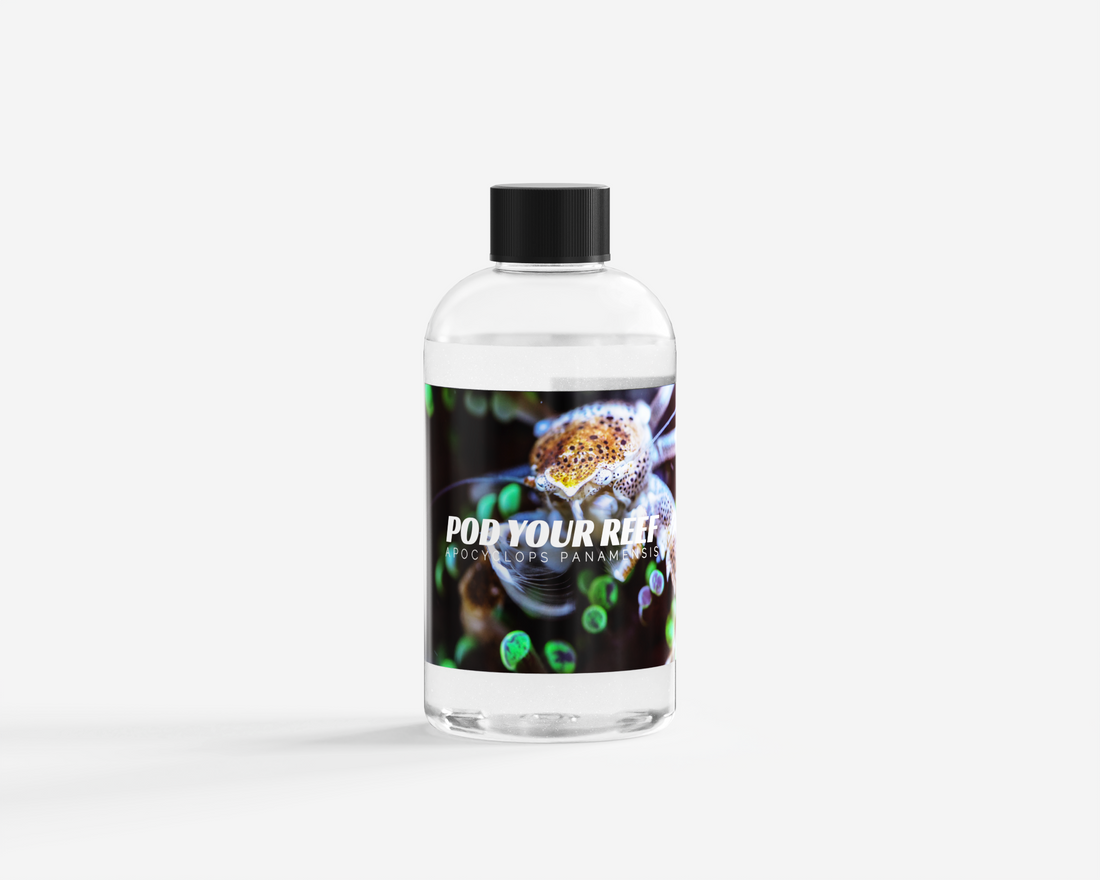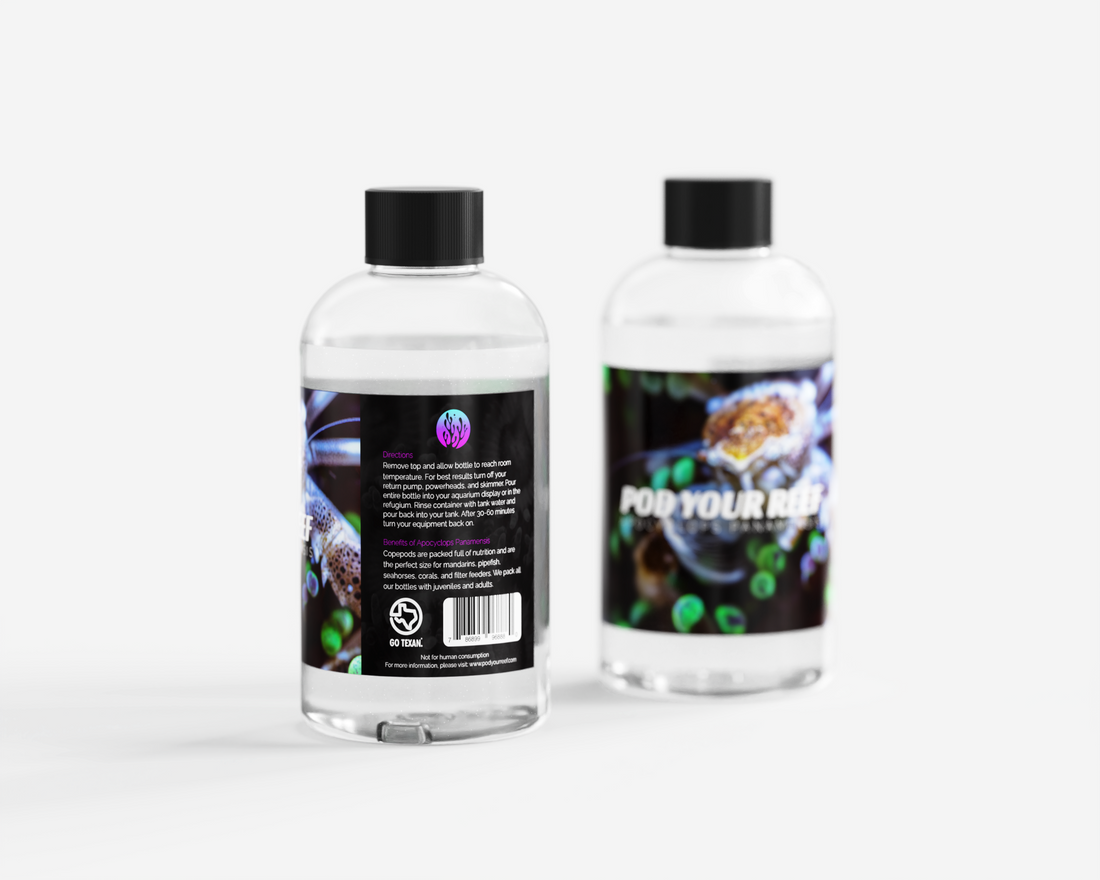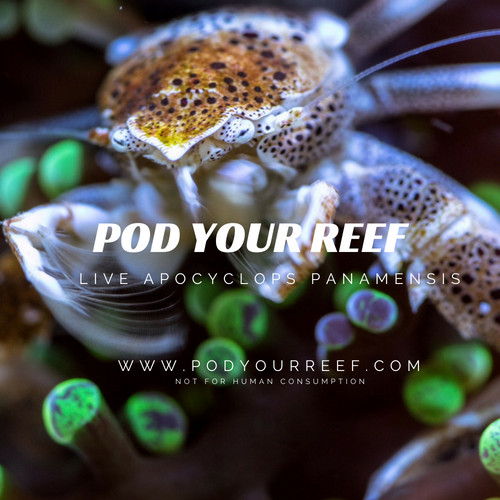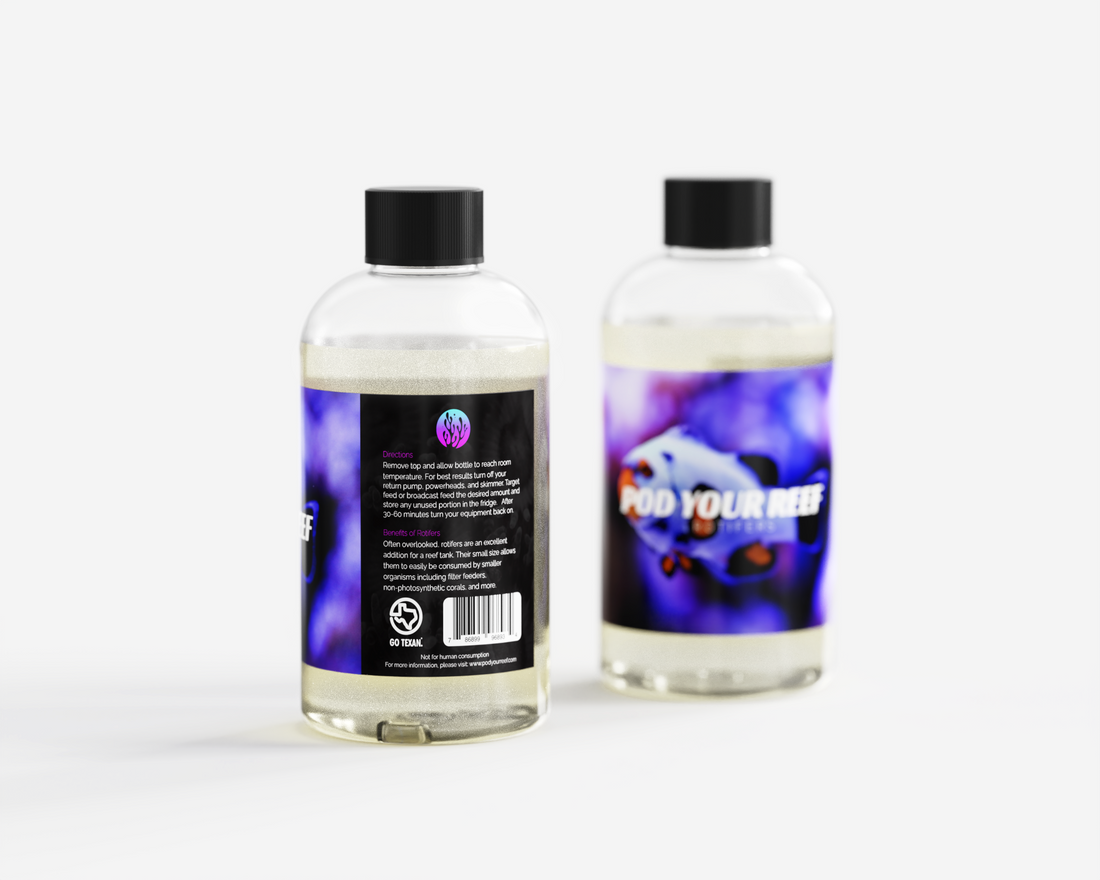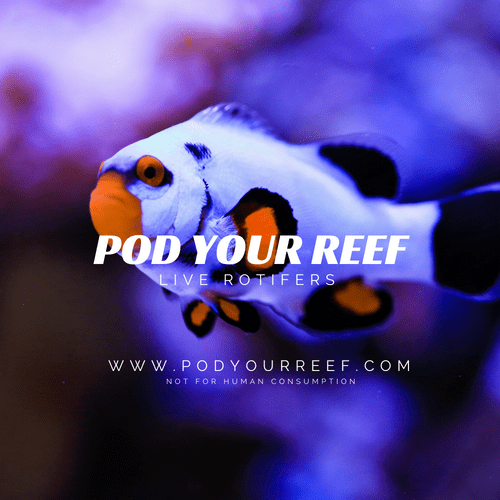
Care
Choosing the Right Sand for Your Reef Aquarium: Reef-Specific vs. Play Sand
Choosing the Right Sand for Your Reef Aquarium: Reef-Specific vs. Play Sand
Introduction
Choosing the sand substrate for a reef aquarium is a critical decision that affects the tank’s appearance, water chemistry, and even the health of your livestock. Reef hobbyists often debate the merits of aragonite-based reef sands (marketed specifically for marine aquariums) versus cheaper alternative sands like hardware store play sand. Understanding the differences in sand composition, buffering capacity, and impact on water chemistry will help you make an informed choice. Additionally, factors like particle size, sandbed depth, and compatibility with aquarium inhabitants play a big role in the success of your reef tank. In this article, we’ll explore these topics in depth – from sugar-fine oolitic sands to coarse crushed coral, from shallow beds to deep sand beds – so you can select the ideal substrate for your marine ecosystem.
Aragonite vs. Silica – Sand Composition Matters
Reef aquarium sands are typically made of aragonite, a form of calcium carbonate (CaCO₃) that comes from crushed coral skeletons or oolitic limestone. In contrast, most play sand or construction sand is largely silica (silicon dioxide, SiO₂), essentially quartz. This fundamental difference in composition leads to several practical implications:
- Chemical Reactivity: Aragonite is slightly soluble in lower-pH conditions, meaning it can dissolve and release minerals, whereas silica sand is essentially inert. Aragonite’s solubility gives it a potential buffering ability in acidic environments (more on that below), but silica will not alter pH or hardness. In a healthy reef tank with a pH around 8.0–8.3, aragonite remains mostly undissolved; silica also remains inert but provides no buffering at all
- Buffering Capacity: Manufacturers often tout aragonite sand’s ability to help maintain stable pH by slowly dissolving and adding alkalinity. It’s true that aragonite can dissolve to release calcium and carbonate ions if the pH drops low enough (around 7.5 or below) In normal reef conditions, however, the pH isn’t low enough for this to happen to any significant degree. As reef chemistry expert Randy Holmes-Farley notes, aragonite sand will only meaningfully dissolve at a pH of ~6.5 – far below what we maintain in our tanks. In fact, at typical reef pH, aragonite may do the opposite: it can act as a surface for precipitation of calcium carbonate (binding carbonates rather than releasing them). This means aragonite sand’s buffering effect is minimal in practice, except perhaps within localized acidic micro-zones (such as deep anaerobic pockets in a sand bed). By contrast, silica sand has zero buffering capacity – it neither dissolves nor contributes any minerals to the water. All pH and alkalinity stability in a silica-sand tank must come from your salt mix and dosing, with no help from the sand itself.
- Dissolved Silicates: One big concern with silica-based sand is the release of silicate into the water, which can fuel diatom algae blooms. Even though silica sand grains are insoluble quartz, they often have minute amounts of soluble silicate on their surface or mixed in. Experiments have shown that “silica” play sand can substantially raise dissolved silicate levels in saltwater, especially initially. In one test, a silica play sand leached about 0.1 ppm SiO₂ in 48 hours and up to 0.3 ppm in two weeks. By comparison, an aragonite sand (Southdown calcium carbonate) released about ten times less soluble silica under the same conditions. This means a silica sand bed may continuously supply low levels of silicate to the aquarium water, encouraging diatom algae growth over time. Aragonite sands are not completely silicate-free either, but they tend to introduce far less silicate.
- Purity and Contaminants: Reputable aquarium sand brands (CaribSea, Tropic Eden, etc.) pre-wash and quality-control their aragonite sand to be free of pollutants. CaribSea, for example, advertises that their aragonite substrates are “free of impurities such as ash, metals, pesticides, and silica,” providing a safe environment for your fish and invertebrates. Play sand or other non-aquarium sands are not held to this standard. They may contain impurities like clay, silt, or traces of heavy metals or fertilizers from their source or packaging. Reef keepers have noted that industrial sands could have contaminants from processing or runoff that you wouldn’t want in a sensitive reef. In short, aragonite reef sand is generally cleaner and safer out-of-the-bag, whereas using a construction-grade sand is a bit of a gamble in terms of what hitchhiking substances might come with it.
- Hardness (Scratch Risk): Another consideration is the hardness of the grains. Quartz silica sand is very hard (7 on the Mohs hardness scale, similar to glass), while aragonite is much softer (around 3–4 Mohs). Why does this matter? If a grain of sand gets trapped under your magnetic algae scraper or between a cleaning pad and the aquarium wall, a hard silica grain can scratch glass or acrylic much more readily than a soft aragonite grain. Hobbyists have learned this the hard way – a single grain of play sand caught in a mag-float can put a noticeable scratch in your display. Aragonite sand is less likely to scratch (it tends to crush into powder under pressure before gouging glass). This is one reason many aquarists avoid silica sand in glass tanks despite its low cost.
- Color and Aesthetics: Aragonite reef sands are usually bright white or off-white. Some have subtle pink or coral flecks (e.g. “Fiji Pink” aragonite has bits of red shell). Play sand often has a tan or grayish color. While looks are subjective, many hobbyists prefer the natural white coral sand look for their reef. Silica sand can appear brownish under reef lighting, and some report that silica sand beds may discolor over time (possibly from absorbed organics or algae films). That said, there are specialty silica sands (like black volcanic sand) sold for aquariums – those give a different aesthetic but come with their own considerations (black sands are often magnetic due to iron content, and can still leach silicates or metals). In general, if you want that tropical white-sand-beach appearance, aragonite is the go-to.
- Cost and Availability: Price is a non-trivial factor. High-quality aragonite reef sand can cost several dollars per pound, whereas play sand or pool filter sand is much cheaper (often just a few dollars for a 50-pound bag) Silica sand is appealing to budget-conscious hobbyists or for very large systems because of this cost gap. However, given that the aquarium is an enclosed ecosystem, the savings may not be worth the potential headaches (algae, contaminants, etc.). Many in the community feel that the sand bed is not the place to cut corners; as one reefer succinctly put it after trying silica, “I used it once and will never use it again” despite the cost savings. Still, the cost difference is real – aragonite sand for a large tank could be $100+, whereas the equivalent play sand might be $10–20. If you do opt for a non-traditional sand to save money, extra care (rinsing, maybe chemical testing) is wise before adding it to your tank.
Bottom Line on Composition: Aquarium-grade aragonite sand is tailored for reef use – it’s chemically compatible, generally free of nasty impurities, and softer on both livestock and your tank itself. Silica-based sands can be used (many people have done so successfully), but you need to be aware of the possible issues: no buffering help, potential silicate leaching fueling diatoms, contamination risks, and scratch hazards. The composition of your sand sets the stage for how it will behave and influence your reef’s chemistry.
Water Chemistry and Buffering in the Sand Bed
One of the touted advantages of aragonite reef sand is its effect on water chemistry, particularly pH and alkalinity. The idea is that a calcium carbonate substrate will act as a buffer, neutralizing acids in the water and stabilizing pH. How true is this in practice?
- pH Buffering: It’s true that calcium carbonate (aragonite) buffers water by dissolving into calcium and bicarbonate/carbonate, but only under acidic conditions. In a reef tank running at pH 8.2, aragonite sand is essentially stable. It does not appreciably dissolve at that pH, so it isn’t actively releasing buffer into the water. If your tank’s pH dropped dangerously low (into the mid-7s or below), the aragonite would start to dissolve and help counteract the acidity – acting as a safety net. However, if your pH is dropping that low, you likely have bigger problems, and relying on your sand to save the day isn’t a good strategy. In fact, forum discussions reveal that many experienced reefers consider the “aragonite sand will buffer my tank” idea to be a myth for normal operating conditions. Only in extreme or localized cases (like inside a deep sand bed, where micro-environments might hit lower pH) does aragonite dissolution play a role in buffering. Contrast this with crushed coral substrates used in freshwater hard-water tanks (like African cichlid tanks), where the acidic bioload and lack of other buffers mean the calcite gravel does actively dissolve and raise hardness/pH. In a reef, our salt mix and any dosing provide plenty of buffer such that the sand ideally just sits there without dissolving.
- Alkalinity and Calcium: For the same reason, you shouldn’t count on your sand bed to supply calcium or alkalinity to corals. Aragonite sand is basically geologically the same as coral skeleton, but it’s a stored form of calcium/alkalinity until it dissolves. Since it won’t dissolve much at reef pH, it’s not bioavailable to your corals. You will still need to maintain calcium and alkalinity via water changes or dosing (Calcium reactor, two-part, Kalkwasser, etc.). There is a small exception: if you run a deep sand bed (DSB) with low-oxygen zones, the respiration by bacteria produces CO₂ which can lower pH in those pockets, potentially dissolving some aragonite in the deepest layer. This might slowly release calcium and carbonate locally, but it’s not usually significant in the water column. Some advanced reefkeepers have even observed that old sand beds can become cemented or clumped due to calcium carbonate precipitation – the opposite of dissolving – if the alkalinity in the tank runs high. The take-home message is that aragonite substrate is not a substitute for proper alkalinity management; think of any buffering it provides as insurance, not a primary method.
- Nutrient Binding: One underappreciated aspect of different sand compositions is how they interact with nutrients like phosphate. Calcium carbonate surfaces can chemically bind phosphate from the water (by adsorbing it or precipitating calcium phosphate). Over time, an aragonite sand bed might soak up phosphate, which is good when you have excess phosphate – but if the sand becomes saturated or if the conditions change (for example, pH drops or you disturb the sand), it could release that phosphate back into the water. This is one reason old sand beds can become “nutrient sinks.” Silica sand, by contrast, doesn’t bind phosphate in the same way. It’s mostly inert and has fewer binding sites for phosphate or other nutrients. While this means a silica sand bed won’t lock away phosphate (leaving more in the water for algae), it also won’t accumulate as much over time. If you diligently vacuum and keep nutrients low, either type of sand can stay fairly clean. But be aware that if you’ve run an aragonite sand bed for years in a high-phosphate system, the sand itself may be loaded with bound phosphate. Switching out or cleaning an old sand bed can sometimes lead to a noticeable drop in phosphate as you remove that reservoir.
- Heavy Metals and Contaminants: As mentioned earlier, aragonite sands from reputable brands are screened for things like metals. Many aragonite sands are mined from ancient marine deposits or collected from clean ocean areas, so they are composed of biogenic material (shells, coral fragments) that generally doesn’t contain harmful heavy metals. Play sand could come from who-knows-where – perhaps a river or quarry that has different minerals present. It might contain traces of metals (like iron, which you often see as rusty streaks in some sands, or others). While usually any metal content is low, the concern is that in saltwater, some metals could leach out. Additionally, silica sands sometimes have additives (for example, some play sands have an anti-dust treatment or are washed with chemicals). Always thoroughly rinse any non-aquarium sand until the water runs clear to remove fine particles and any possible surface residues. Some reefers even soak and test play sand in RO/DI water for phosphates or copper before use, just to be safe. With aragonite sand, a rinse to remove dust is usually all that’s needed, as it’s intended for aquarium use.
- Silicate and Algae: We touched on silicates fueling diatoms. Diatom algae thrive on soluble silicate – it’s a required nutrient for them to build their silicate frustules (shells). New tanks often get diatom blooms from silicate in the fresh sand (even aragonite can have a tiny amount of silicate impurities). Using silica sand may extend the diatom phase or cause recurrent blooms whenever silicate leaches out. It’s not that silica sand directly “causes algae” – you can have a pristine tank with silica sand if other nutrients are limited – but it provides one key ingredient for diatoms that aragonite does not. If you battle chronic diatoms and you’re using play sand, the sand could be one contributor. Some hobbyists employ silicate-absorbing filter media (like granular ferric oxide designed to bind silicates) if they must use a silica substrate. Others report that, over time, the initial silicate flush from silica sand subsides, and the tank finds an equilibrium. Many people have kept successful reef aquariums on silica sand, but it requires vigilance with regard to algae control and perhaps extra filtration. By choosing aragonite sand, you essentially remove silicate from the equation (aside from what’s in your salt mix or tap water source).
In summary, aragonite sands have a slight edge in supporting stable water chemistry, but not as dramatically as marketing might suggest. They won’t magically maintain your pH in the ideal range – you still need to manage water chemistry – but they at least won’t introduce substances that promote algae (like silicates or excess phosphates) if they are clean. Silica-based sands are largely chemically inert, which can be a pro (no impact on parameters) and a con (no buffering, possible silicate release). When it comes to water chemistry, think of your sand as either a neutral player (in the case of inert sand) or a very minor supporting player (in the case of aragonite). The heavy lifting of water chemistry control should be done by your salt mix, live rock, and filtration methods, not the sand.
Types and Grades of Reef Aquarium Sand (Particle Size)
Not all “sand” is the same – grain size plays a huge role in how the substrate looks and functions. Reef sands come in a range of particle sizes, from powdery fines under 1 millimeter to chunky pieces several millimeters across. Manufacturers often label their sand by descriptive grade names. Let’s break down the common types of reef sand by grain size, along with their characteristics:

Sugar-Fine Oolitic Sand (0.2–1 mm grains) is very soft and powdery. It provides a natural, white “beach sand” look and is gentle on burrowing creatures, but it can easily blow around in strong water flow.
Sugar-Sized Oolitic Sand (Fine Grain): Often just called “oolite” or “oolitic” sand, this consists of very fine, spherical grains – typically 0.25 to 1 mm in diameter. CaribSea’s Aragamax Sugar-Sized Oolite is an example of this grade. It has a velvety, ultra-fine texture (almost like baking powder when wet). The pros of oolitic sand are its aesthetic and animal-friendliness: it looks like tropical reef sand and allows small sand-dwelling critters to burrow easily. Many sand-sifting organisms love fine sand because it’s easy to ingest and filter for food. Jawfish, garden eels, and burrowing worms will have an easier time digging in oolite than in coarser substrates. However, the cons can be significant. Fine oolitic sand is notorious for being “stormy” in high-flow tanks – powerheads or wavemakers can kick it up into the water column, creating a sandstorm that clouds the water or accumulates on live rock and corals. Hobbyists with strong flow (e.g. SPS coral keepers) often complain that sugar sand ends up in drifts, with bare glass in some areas and dunes in others. “It does blow around a lot and causes sandstorms in the tank if you have too much current,” one reefkeeper noted about fine sand. This can be managed by adjusting flow direction or using rockwork to shield certain areas, but it’s a challenge. Fine sand also tends to pack densely; over time it can compact, reducing water flow through the bed (more on that in the sand bed depth discussion). Because of this, extremely fine sand is actually ideal for deep sand beds – the tight packing helps create anoxic zones at a shallower depth. But in a shallow bed, compaction of fine sand can lead to hardened clumps or “dead spots” unless regularly stirred. In summary, sugar-fine sand is best for low-to-moderate flow tanks or deep sand bed setups, and for tanks with delicate sand-burrowers that need a soft substrate. If you plan on blasting your tank with flow, you might regret using oolitic sand due to constant shifting and clouding.

Special Grade Reef Sand (1–2 mm grains) is a medium sand popular for all-around use. Its grains are heavy enough to resist most currents, yet still small enough for many animals to burrow in.
Special Grade Reef Sand (Medium Grain): This is a 1 to 2 mm grain size, often considered the “goldilocks” sand for reef aquariums. CaribSea’s Special Grade sand falls in this category, as do Tropic Eden’s “Reef Flakes” variants (which are ~2–3 mm, a similar medium size range). Special grade sand feels like coarse sand or fine gravel to the touch. It stays in place far better than sugar sand under strong flow – you won’t get the same level of sand blowing around, though a direct blast from a pump can still move it a bit. For example, users report that CaribSea special grade sand “does not blow around” in medium flow conditions, and only a direct stream from a powerhead will shift it a little. This makes it a great choice for reef tanks where you want to run higher water movement (for coral health) without going bare-bottom. The trade-off is that the grains are larger and more abrasive compared to oolite; very small critters might not burrow as readily. Most sand-sifting gobies can still sift 1–2 mm grains (they’ll just spit out the larger bits), and many burying fish like wrasses handle it fine – as one hobbyist noted, his wrasses buried in special-grade Arag-Alive sand “every night with no problems or scratches” on their bodies. However, extremely small animals (tiny microfauna, some delicate shrimps) might prefer finer sand. Special grade provides a good balance between stability and bio-function: it’s open enough to allow decent water flow and oxygen into the upper layers, but not so large that detritus falls straight through to the bottom quickly. You can also syphon/vacuum special-grade sand during maintenance without sucking all of it out of the tank (fine sand can easily get sucked out). Overall, 1–2 mm sand is a versatile, all-purpose reef substrate – it’s the reason you’ll see it recommended often to beginners who ask “what sand should I use?”

Coarse Crushed Coral (3–5+ mm pieces) is a very coarse substrate composed of coral fragments and shells. It stays put in high flow and can provide pH buffering, but traps detritus easily and is unsuitable for sand-sifting animals.
Coarse Sand and Crushed Coral (Large Grain): Moving beyond what we’d normally call “sand,” the 3 to 5 mm range is more like small gravel. Products like Florida Crushed Coral or Seaflor Reef Gravel fall here. This substrate consists of chunky pieces of crushed shells, coral skeleton fragments, and coral rubble. It was very popular in the earlier days of marine aquariums (and is still used in some fish-only or cichlid tanks). The big advantage of crushed coral is that it’s heavy and stays in place – you can blast it with a strong pump and it won’t go airborne in the water column. For high-flow SPS coral tanks, some aquarists use a thin layer of coarse sand or coral gravel to get the white sandy look without worrying about sand dunes forming. Also, the larger particle size means there are lots of gaps and pores, which can foster some beneficial nitrifying bacteria and micro-crustaceans. However, the large gaps are a double-edged sword: they tend to collect detritus (food bits, fish waste) which then decay in place. If not regularly vacuumed, a crushed coral bed can become a detritus trap, leading to elevated nitrates – hence the old saying that under-gravel filters and crushed coral beds were “nitrate factories” if not meticulously maintained. Many modern reefers avoid crushed coral for this reason, or they use it only in a filter context (like in a refugium or reactor) rather than as the display substrate. Another downside is compatibility with livestock: sand-sifting gobies cannot effectively filter 5 mm chunks (imagine trying to eat rocks the size of your head!). Animals like burrowing snails or worms will also have a hard time moving through a coarse bed. Even many burrowing fish won’t dig in pure crushed coral – it’s like you trying to dig into a pile of jagged rocks. Some fish might injure themselves on sharp shell pieces. That’s why guidance for jawfish, for instance, is to provide a mix of fine sand and some coarse bits (we’ll cover that later). Coarse substrates also have some buffering capacity over time: as organic matter decays in those detritus-filled gaps, it can create acidic micro-pockets that slowly dissolve the calcium carbonate in crushed coral, contributing a bit to alkalinity and calcium levels. But again, this is slow and minor – not a replacement for proper chemistry control. In summary, coarse aragonite or crushed coral is best for tanks where maximum flow and stability are needed, and where you either don’t plan on sand-dependent fauna or you commit to heavy substrate cleaning. Most reef keepers today lean towards finer sands unless there’s a specific reason to go coarse.
Other Niche Substrates: Between these categories, you might encounter mixes and specialty products. For example, “Fiji Pink” sand is about 0.5–1.5 mm (a mix of fine and medium with pink flecks). “Bahamas Bimini Pink” might have grains up to 5 mm mixed with finer ones. Tropic Eden offers unique grades like “Mesoflakes” (around 2.7 mm) and “Grand Select” (around 4.5 mm) which don’t neatly fit the generic labels. Some hobbyists even layer different grain sizes: a layer of fine sand topped with a layer of slightly larger grains, for instance. (The larger grains tend to work their way to the top anyway as the sand bed is disturbed over time – a process called reverse grading.) Mixing grain sizes can be useful: the fine sand below creates a denitrifying zone and comfort for burrowers, while a sprinkling of coarser grains on top keeps the surface from blowing away. Just be cautious not to create the scenario where very fine and very coarse are mixed so much that the fine completely fills the voids between coarse – that can lead to a compacted bed that behaves more like fine sand overall (potentially trapping anaerobic pockets unintentionally in a shallow bed).
To visualize the difference: imagine grabbing a handful of each type. Fine oolitic sand will leave a powdery residue on your hand and flow like flour. Special grade feels like gritty sand that readily falls through your fingers. Crushed coral feels like a handful of small shells and pebbles. Each has its place, and you can choose based on your tank’s needs: aesthetics, flow, and livestock all factor in.
Sand Grain Size vs. Aquarium Flow
One of the most important practical considerations when picking sand is how it will interact with water flow in your tank. Reef tanks need strong circulation for coral health and filtration, but that flow can wreak havoc on a loose substrate. Thus, matching your sand grain size to your anticipated flow levels will save you a lot of frustration:
- Fine Sand in High Flow: As noted, very fine sand (sub-1mm) is prone to shifting and blowing. If you aim a powerhead at the sand bed or ramp up a wave maker, don’t be surprised to see sand rippling like a desert dune. You may end up with bare patches (where sand has blown away to pile up elsewhere) or sand coating your live rock and coral frags. Beyond just looking messy, sand that lands on coral can irritate or even kill tissue (e.g., a LPS coral’s flesh can get abraded by sand). Reefers with fine sand often find themselves doing a delicate dance: either tuning down flow to keep the sand still, or adjusting the angle of pumps to blow above the sand, or strategically placing rock to act as a buffer. For example, you might point a powerhead slightly upward or toward a tank wall instead of straight across the sand. Some create “no sand zones” under pumps by using rock or bare-bottom patches there. Despite best efforts, truly sugar-fine sand may still get stirred in a vigorous reef tank – it’s simply very lightweight. For this reason, high-energy reef tanks (like SPS-dominated tanks with multiple gyre pumps or Vortechs at high speed) usually forego the ultra-fine sand. Many experienced reefers on forums will warn newcomers: “Everybody always wants fine sand, but it's a nightmare if you want medium or high flow in your tank”. That said, if your tank is lower flow (soft coral or mushroom tanks, seahorse tanks, etc.), fine sand can work beautifully since water movement is gentle.
- Medium Sand in Moderate/High Flow: Medium-grade sand (~1–2 mm) is considered ideal for high-flow reefs by a lot of hobbyists. It’s heavy enough to largely stay put, especially after the initial settle-in period. When you first fill the tank or first increase flow, you might see a bit of movement, but once the sand bed develops some biofilm and “locks in,” it resists shifting. In fact, CaribSea Special Grade is often explicitly recommended for high-flow reef tanks for this reason. One aquarist mentioned running Vortech pumps up to 70% in a tank with special grade sand with minimal issues. Another noted that Tropic Eden Reeflakes (around 3 mm, similar to special grade) stayed in place despite strong pumps, whereas his previous slightly larger CaribSea grains had moved a bit. So, if you plan on lots of flow, consider at least a 1 mm grain size or larger. Medium sand can still shift if directly blasted – you might get some minor dunes forming – but it’s manageable. And it won’t create dust clouds; the pieces are too heavy to stay suspended long, so the water stays clear.
- Coarse Substrate in Extreme Flow: If you’re going for maximum flow (wave tanks, Surge devices, or very large pumps) and absolutely don’t want to see sand movement, coarse is the way to go. Crushed coral or large-grain sand will sit through a hurricane. This is why some bare-bottom enthusiasts compromise with just a sprinkling of crushed coral – it gives a natural look without introducing much that can move. However, keep in mind the detritus issue: high flow tends to keep detritus in suspension, which is good, but any that does settle will likely accumulate between those coarse chunks. You’ll need to vacuum it out or use a strong filter to catch what the flow kicks up. Another tactic for high flow systems is to use bare-bottom (no sand) in the main tank and a deep sand bed elsewhere (like in a refugium or separate container) – that way you avoid sand disruption altogether. We’ll stick to discussing sand here, but it’s worth mentioning that bare-bottom tanks eliminate the sand vs. flow problem entirely, at the cost of not having the natural look or sand habitat (more on livestock implications later).
- Techniques to Manage Sand Movement: If you love the look of fine sand but also love high flow, you can try a few strategies:
- Sand Drifts and Barriers: Arrange rocks in a way that shields certain areas of sand from direct flow. Create “coves” or use rock skirts at the base of structures to hold sand in place. Some hobbyists even use strips of acrylic or aquarium-safe epoxy to create low sand dams along the front glass or sides in spots where flow tends to push sand away.
- Flow Timing: If using pumps with controllers, you might alternate flow modes so that no single direction runs constantly. This can prevent one-way sand migration. Randomized flow (like with a Gyre or ReefWave, or using multiple pumps on Reefcrest/Random modes) can minimize sustained pressure on one spot.
- Vacuuming and Redistribution: During water changes, you might siphon up sand from piles where it collected and then gently deposit it back to bare areas. This manual “landscaping” can even out the sand bed.
- Heavier Top Layer: As mentioned, mixing in a bit of heavier sand on top of fine sand can help. For instance, some have mixed CaribSea Fiji Pink (mostly fine) with Special Grade (medium) to get a blend that doesn’t blow as much. Tropic Eden users have combined “Reefflakes” (3 mm) with smaller “Miniflakes” (2 mm); the smaller grains settle down into the larger ones and the larger remain on top to take the brunt of flow. This approach can be quite effective: one reefer observed that after mixing sizes, “the smaller grains sift down and the flakes stay on top,” resulting in a stable bed.
In summary, strong flow and fine sand require a bit of extra thought and effort to coexist. Medium sand is the safest bet for most reef tanks aiming for both good flow and a clean look. Coarse sand will definitely stay put but introduces other maintenance concerns. When planning your tank, try to visualize water movement patterns and choose a substrate that can handle it. It’s far easier to pick the right sand initially than to swap it out later if you find your tank constantly looks like a snow globe of white dust!
Shallow vs. Deep Sand Beds (SSB vs. DSB)
Beyond composition and grain size, how deep you make your sand bed dramatically affects its function. In reef keeping, we generally classify sand beds as either Shallow Sand Beds (SSB) or Deep Sand Beds (DSB), with a gray area in between. Each approach has its pros and cons for nutrient cycling, maintenance, and tank health.
- Shallow Sand Bed (SSB): Typically about 0.5 to 2 inches (1–5 cm) deep – enough to cover the bottom and provide the “reef look,” but not so deep that large anaerobic (oxygen-deprived) zones form. Most decorative sand beds in display tanks are shallow. The advantages are mainly in ease of maintenance and reduced risk:
- Easy to Clean: A shallow sand bed can (and should) be periodically vacuumed or stirred during maintenance. Because it’s thin, detritus doesn’t get deeply buried – you can siphon out waste from the top layers without causing major disruption. This helps prevent the infamous “nitrate factory” scenario. In fact, it’s generally recommended to siphon a shallow sand bed monthly or so, in sections, to keep it clean.
- Oxygenated Throughout: In an SSB, oxygen can penetrate the full depth of the sand, so nearly all of it supports aerobic bacteria (which convert ammonia to nitrite to nitrate). It’s unlikely to develop pockets of hydrogen sulfide (the rotten egg gas that can form in stagnant, oxygen-starved sediment) because there’s not enough depth to go truly anoxic. One reefer succinctly cited a pro of shallow beds: “no gas build up,” meaning no worry about toxic sulfide accumulations.
- Aesthetic and Natural Behavior: You still get the natural appearance of sand, which many prefer over bare glass. And you can keep animals that need a bit of sand (wrasses to bury, gobies to sift, etc., as long as their depth needs aren’t extreme). For example, a 1–2 inch bed is usually fine for most sand-sleeping wrasses (they’ll find a corner to wiggle into) and for many gobies and snails. It might be a little shallow for larger burrowers like jawfish, though (they typically like more depth – we’ll discuss them separately).
- Lower Risk of Old Tank Syndrome: Because you’re regularly removing detritus and the bed isn’t accumulating much anaerobic material, a shallow sand bed doesn’t “mature” in the same way a DSB does. You won’t have the sand bed suddenly crashing the tank years down the line – at least not if you maintain it. Some seasoned hobbyists report running the same shallow sand for a decade, just routinely cleaning it, without issues.
- Drawbacks: The flip side is that a shallow bed provides little to no denitrification. It will convert ammonia to nitrate via nitrification, but nitrates then remain in the water until exported by other means (water changes, refugium, skimming, etc.). Live rock will handle some denitrification, but the sand itself, being oxygenated, isn’t reducing nitrate to nitrogen gas. Also, because it’s shallow and fully aerobic, you need to keep up with cleaning or those nitrates and phosphates from trapped detritus will leach into the water. Another “con” that a hobbyist humorously pointed out: “gobies don’t have as much fun” in a shallow bed– meaning sand-dwelling creatures might be limited or less comfortable compared to a deep bed.
- Deep Sand Bed (DSB): Generally defined as 3.5 to 6+ inches (9–15+ cm) of sand. The idea behind a DSB is to replicate the deep sand or muck zones of a natural lagoon or seafloor, where oxygen doesn’t reach and different processes occur. Properly set up, a DSB can become a powerful biological filter:
- Anaerobic Zones for Denitrification: The bottom layers of a deep sand bed will have no oxygen (because the oxygen is consumed by bacteria in the upper layers and can’t diffuse all the way down). In these anaerobic layers, denitrifying bacteria thrive – these microbes use nitrate as an oxidizer, converting it into nitrogen gas which then bubbles out of the tank harmlessly. This is the primary benefit of a DSB: it can act as a natural nitrate reducer. Many aquarists with deep sand beds report extremely low nitrate levels once the bed matures, without needing other nitrate removal methods. In essence, a DSB can complete the nitrogen cycle in-tank: ammonia -> nitrite -> nitrate in the upper sand/rocks, then nitrate -> nitrogen gas in the depths. This is similar to how live rock works internally, but a DSB provides a much larger volume for anaerobic activity.
- Biodiversity and Microfauna: A live DSB tends to teem with life. Tiny worms, copepods, amphipods, mini brittle stars, burrowing snails, and more will colonize the sand if given a chance. These sand fauna continuously churn the sand (a process called bioturbation), which actually helps prevent the bed from becoming too static. They also consume detritus, keeping the sand healthier. A flourishing DSB can be like its own ecosystem – some reefers even set up refugiums with deep sand beds just to cultivate beneficial microfauna and extra filtration. If you enjoy the ecosystem aspect of a reef tank, DSBs can be fascinating.
- Minimal Maintenance (with a Catch): One mantra of DSB keeping is “don’t disturb it.” Other than perhaps gently vacuuming the very surface to remove loose detritus, you generally do not stir or siphon a functioning deep sand bed. You let the worms and microbes do the work. This means less manual work than vacuuming a shallow bed all the time. However, the “catch” is that you must refrain from disturbing it precisely because it’s doing heavy-duty nutrient processing. If you kick up the anaerobic layers, you can introduce hydrogen sulfide or large loads of nutrients into the water all at once, which can be dangerous.
- Gas Pockets and Risks: Over time, a DSB can accumulate zones of hydrogen sulfide (H₂S) from anaerobic decay. These often appear as black patches deep in the sand. As long as they stay put, they slowly diffuse out in harmless amounts or get processed by sulfide-oxidizing bacteria. But if you suddenly stir up a black pocket (for example, by moving a rock that was sitting on the sand, or during a tank move), you could release a burst of toxic gas that can stress or kill livestock. This is the primary risk of DSBs – they require respect and care when handling. The “nuclear bomb” scenario is if a deep sand bed that’s been running for years is all stirred at once; it can crash a tank (there are horror stories on forums of this happening). That said, many people run DSBs for years without issue by simply leaving the sand bed alone aside from surface cleanup.
- The Middle Ground Problem: It’s worth noting that a sand bed of around ~2–3 inches, sometimes called the “no man’s land,” can be problematic. It’s too deep to be fully oxygenated, but not deep enough to establish robust anaerobic zones. This intermediate depth might accumulate detritus and develop some anoxic spots that produce wastes, but without the volume to effectively eliminate nitrate. In other words, you could get the disadvantages of both shallow and deep beds with few of the benefits. For this reason, many experts say go either under ~2 inches or over ~4 inches – but don’t sit around 2–3”. That zone could become what one article called an “unsafe zone, not quite deep enough for anaerobic bacteria to denitrify, but too deep for aerobic bacteria, thus allowing build-up of toxic wastes”. It’s a guideline, not a strict rule (some have had 3” beds that function fine, especially if well-crawled by critters), but it’s a good principle: shallow for easy maintenance or deep for nitrate reduction, but 2–3” only if you actively keep it clean or seeded with a lot of life.
- Longevity and Old Tank Syndrome: DSBs may have a limited lifespan (often cited as 5–7 years) before they become saturated with nutrients and need to be rejuvenated or replaced. Over years, even with the best detrivores, some organic matter and phosphate will accumulate. Some aquarists will replace or clean a deep sand bed in sections (never all at once) after several years to prevent a crash. Others have successfully run the same DSB for a decade, so experiences vary. But be aware that a mature DSB is a bit of a black box – things are happening down there you can’t easily observe. Regular testing of nitrates and careful watch of tank health can clue you in if the DSB is still working or if it’s “full.” If nitrates start creeping up after years of being near zero, the sand may be exhausted or clogged.
- Hybrid Approaches: There are some interesting approaches that try to harness DSB benefits without the display tank risks:
- Remote Deep Sand Bed (RDSB): This is a deep sand bed located outside the main display, often in a bucket or refugium that’s plumbed into the system. The idea is you run water through a container of deep sand (like a 5-gallon bucket full of fine sand). It will act as a nitrate filter. If it starts producing algae or accumulating too much crud, you can take it offline or clean it without disturbing your display. Because it’s “remote,” any disaster (like H₂S release) can be isolated. RDSBs saw popularity as a DIY nitrate solution – e.g., flowing tank water through a container of sand slowly. They aren’t as common today with the rise of other nitrate control methods (like bio-pellets and refugiums), but they do work.
- Plenums: The Jaubert-style plenum is another DSB variant. It involves having a gap of water under the sand bed (created by a grid or platform) to facilitate better circulation of nutrients and prevent complete stagnation. Plenums were popular in the 90s as a refinement of deep sand beds. Some studies (like those by Dr. Jean Jaubert) indicated they could be very effective. Modern takes on it are rare, but some hobbyists still implement plenums to keep their deep sand beds “active” and possibly extend their life.
- Deep Sand Zone: If you have a large tank, you might make one area deep (say one corner piled 6” for a jawfish or for denitrification) and keep the rest shallow. This way you localize the DSB effect. If ever needed, you could remove that section. The downside is it could potentially leak nutrients into the rest of the tank if disturbed. A clever version of this is building an elevated deep sand container (like a acrylic box or PVC pipe section hidden in the aquascape) that contains deep sand for a jawfish or for filtration. One reefer considering this asked if an “elevated sand zone” would work for a jawfish burrow – it can, if constructed well.
In summary, shallow and deep sand beds serve different goals. A shallow bed is about aesthetics and basic biological function (housing nitrifiers and some critters) while being easy to maintain or replace. A deep bed is about maximum biological filtration (especially nitrate removal) and creating a more complex ecosystem in the sand, but it requires a longer-term commitment and careful handling. Neither is “wrong” – it depends on your priorities. Many reefers today opt for shallow beds in the display and use other means to handle nitrates, finding it a safer, simpler route. Others swear by deep sand beds providing stable, low-nutrient conditions and will never go without one. It’s vital to know the maintenance needs of each: vacuum your shallow bed regularly, or conversely, do not stir your deep bed beyond the surface. And avoid that in-between depth unless you actively manage it.
Nutrient Cycling in the Sand Bed
The sand bed, whether shallow or deep, is a living part of your reef’s filtration system. Let’s connect what we’ve discussed to how nutrients (waste) are processed in sand, and how to manage your sand bed for a healthy nutrient balance:
- Aerobic Waste Processing: In the oxygen-rich upper layers of sand, nitrifying bacteria colonize the grains. These bacteria (Nitrosomonas, Nitrobacter, etc.) convert toxic ammonia (from fish waste, uneaten food decay, etc.) first into nitrite and then into nitrate. Live rock usually carries the bulk of this, but sand significantly increases total surface area for bacteria. In fact, fine sand has tremendous surface area – each grain can host biofilms. So even a shallow sand bed acts as a big biological filter for ammonia->nitrite->nitrate conversion. This is why new tanks often benefit from “live sand” – it jumpstarts the population of nitrifiers on the sand grains to help quickly process waste. By the time water percolates a couple centimeters into the sand, most ammonia is likely processed into nitrate already (assuming the tank is cycled). This nitrate then either stays in the water or diffuses deeper if a DSB is present.
- Anaerobic Denitrification: In a deep sand bed (or possibly even inside clumps of detritus in a shallow bed), denitrifying bacteria will reduce nitrate to nitrogen gas. This completes the nitrogen cycle by removing nitrate from the system naturally. Even shallow sand beds may have micro-zones of deoxygenated activity – for instance, under a rock or within a dense clump of fine sand, there might be little pockets where some denitrification happens. Interestingly, recent research mentioned in an Advanced Aquarist article found that both shallow and deep sand beds showed conversion of nitrate to nitrogen gas, suggesting that some level of denitrification can occur even in shallow beds. How? Likely through micro-environments or the help of sand-dwelling organisms. Certain bacteria might form anaerobic micro-sites within organic particles in any sand bed. So, while deep beds are far more efficient at it, shallow sand beds are not completely devoid of denitrifying capability. They just can’t handle large nitrate loads the way a DSB can.
- Detritus and Organics: Sand tends to accumulate detritus – which includes fish waste, uneaten food, dead algae, and other particulate organic matter. In a bare-bottom tank, all detritus stays visible and can be blown around to be filtered out. In a sand-bottom tank, some detritus works its way into the sand. This isn’t inherently bad – in fact, a moderate amount of detritus can feed the sand’s microfauna (pods, worms, bacteria). These organisms will break it down, remineralize nutrients, etc. The danger is when detritus accumulates faster than it’s broken down or removed. Excess detritus in sand will lead to:
- Elevated Nitrates and Phosphates: As detritus decomposes, it releases nitrate and phosphate. If your sand bed is full of mulm, you might struggle with high nitrates/phosphates fueling algae.
- Oxygen Consumption: The decay of detritus consumes oxygen, which in a deep bed helps create anaerobic zones (good in controlled amounts), but in a shallow bed can create unexpected low-oxygen pockets that produce foul compounds.
- Cyanobacteria growth: Detritus-rich sand often grows patches of cyanobacteria (red slime algae) on the surface, because cyano can feed on the nutrients diffusing out and enjoys the low-flow microzones on the sand surface.
- Sulfide Production: In pockets where detritus is trapped and completely runs out of oxygen, you’ll get hydrogen sulfide production (that black sulfur smell). This is more of a risk in neglected deep beds or under rocks in shallow beds that never get cleaned.
- Cleanup Crew (CUC): Mother Nature’s solution to detritus buildup is having lots of little critters constantly processing it. A good cleanup crew for sand includes:
- Sand-Sifting Snails: e.g., Nassarius snails are classic – they burrow through sand, eating decaying matter and keeping the sand stirred (only the top layer). Cerith snails also burrow and sift through the sand (and they eat algae and diatoms on the sand surface as well).
- Sea Cucumbers: Certain cucumbers (like the Tiger Tail cucumber) are excellent at ingesting sand, digesting the organics, and expelling clean sand. They are like living sand filters. One can slowly churn a surprising amount of sand. Caution: some cukes can release toxins if they die, but the commonly sold sand-sifting ones are generally safe if healthy.
- Bristleworms & Micro-fauna: Often appearing on their own if you have live rock, bristleworms are actually great detrivores in the sand. They slither through, consuming bits of food. Mini brittle stars (tiny starfish with long arms) are also great – they extend arms to grab food and hide in sand crevices, constantly moving grains around.
- Sand-Sifting Starfish: These are sometimes recommended, but most of the time sand-sifting sea stars (Astropecten polycanthus) will clear out every beneficial organism in the sand and then starve, as they consume the microfauna itself. They’re not really eating detritus; they’re eating the critters that eat detritus. For this reason, many modern reefers avoid them unless in very large, mature systems.
- Gobies: Fish like Diamond Gobies (Genus Valenciennea) or other “sleeper gobies” will actively take mouthfuls of sand, sift out food, and spit the sand out. They are excellent at keeping the sand surface turned over and aerated, and they remove bits of food (which they eat). The caveat is that they need enough food in the sand to survive, or supplemental feeding; otherwise they can decimate the sand’s fauna and then starve. Also, they tend to drop sand on everything – including live rock and corals – which can be annoying. But from a nutrient standpoint, they help move detritus into the water column (when they spit it out) to be filtered off, or they eat it.
- Others: Pistol shrimp (with gobies) will move sand when making burrows, horseshoe crabs (not common in reefs, and they get large), certain wrasses that snuffle through sand for pods (like Halichoeres genus) – all these can contribute to sand turnover.
A diverse clean-up crew will significantly reduce detritus buildup in the sand. Their constant stirring and consumption means less accumulates to problematic levels. If you observe your sandbed is devoid of worms, stars, or other life (often the case in an all-dry rock, all-dry sand start), it’s wise to “seed” the sand with live sand or a scoop from an established tank to introduce these beneficial critters.
- Maintenance: No matter the depth, some maintenance helps keep nutrient cycling optimal:
- For shallow beds, as noted, regular vacuuming of small sections during water changes prevents long-term buildup. You don’t want to vacuum the whole sand bed at once (that could remove too many good organisms at one time), but splitting the tank into quadrants and cleaning one quadrant each week is a common approach. This way, by the time you get back to the first section, it’s been a month. This removes detritus while allowing the sand’s biology to recover between cleanings.
- For deep beds, you deliberately do not vacuum deep. But you can gently siphon the very top surface if a lot of detritus or cyanobacteria is sitting on it. Or use a turkey baster to blow detritus off the surface so your filter sock or skimmer can get it. Some people occasionally replace the top half-inch of sand if it becomes dirty – again, leaving the deep layers intact. If you have sandbed animals, typically they will handle the top layers for you (e.g., cucumber, nassarius, etc., will keep it pretty clean).
- If you suspect areas of the sand are accumulating nasties (say, around base of a rock you can’t move), you might carefully prod in that area with something like a rigid airline tubing and see if any bubbles (sulfide gas) come out. If so, you might consider adding some burrowing snails or rearranging to break that up safely. You can also take a long syringe and gently inject a bit of tank water or hydrogen peroxide into suspect spots to neutralize sulfide (peroxide will instantly oxidize H₂S) – but that’s an advanced technique used with caution.
- Replacing Sand: Some reefers advocate replacing part of the sand bed every few years. For example, each year remove and replace 20% of the sand with new aragonite. This way, after 5 years, it’s essentially renewed. This can be done in a shallow bed fairly easily. In a deep bed, it’s trickier and often not done unless necessary (some instead just start a new deep sand bed in a separate container if the old one seems spent).
In essence, your sand bed can either be a nutrient sink or a nutrient processor – it depends on how you manage it. A well-maintained sand bed with a good cleanup crew becomes an asset: it processes fish waste into harmless nitrogen gas and binds up some phosphates, all while hosting a mini food web that can even feed your fish (pods etc.). A neglected sand bed, conversely, can accumulate waste and become a ticking time bomb. The key is to strike the balance: populate it with the right organisms and perform regular maintenance appropriate to its depth. If you do that, your sand will significantly contribute to the stability and health of your reef system by helping handle the constant input of nutrients from feeding and livestock.
Compatibility with Sand-Dwelling Reef Inhabitants
If you plan to keep certain fish and invertebrates that interact with the sand, your substrate choice can make or break their well-being. Let’s discuss some common sand-associated critters and what they need:
- Jawfish (e.g. Blue-Spotted Jawfish, Yellowhead Jawfish): Jawfish are burrow-building fish that require a deep sand bed with mixed particle sizes. In the wild, they dig burrows in sand and rubble, often several inches deep, and line the walls with pebbles and shell pieces to reinforce it. In an aquarium, to keep jawfish happy you should provide at least about 4–6 inches of substrate. More is better; some recommend up to 8 inches for the larger species. The substrate should be a mix of fine sand and some small chunks (like crushed coral, shell fragments, or even pieces of calcium reactor media which is essentially coral skeleton). The fine sand allows them to dig and feel secure, and the coarse bits are carried by the jawfish to the burrow entrance to make a sturdy “roof” or tunnel opening. One aquarist suggests adding PVC tubes under the sand to help form semi-structured tunnels that jawfish can use– this can prevent collapses and make the jawfish feel at home. If you try to keep a jawfish on a shallow sand bed, it will be very stressed, likely continually trying to dig but hitting the tank bottom. A desperate jawfish might even jump out (jawfish are notorious jumpers when unhappy or spooked). So if a jawfish is on your wish list, plan for a deep sand zone. Some people create a “jawfish condo” by partitioning a section of the tank with rocks and having just that area deep with extra rubble. In any case, aragonite sand is preferred for jawfish because they will actually ingest some sand when feeding or digging – aragonite won’t harm them and is what they’re used to in nature, whereas sharp silica might irritate them (anecdotal, but often mentioned). Also, jawfish come from tropical reefs, so avoid very dark or black sand, as they might feel exposed (they like the light sand that matches their camouflage). For Blue-Spotted Jawfish specifically (Opistognathus rosenblatti), note they prefer cooler temps and also need deep substrate – they are often kept in dedicated species tanks with deep sand.
- Burrowing Wrasses: Many wrasses, especially in the Halichoeres genus (such as the Yellow “Coris” Wrasse, Melanurus Wrasse, Christmas Wrasse) and Macropharyngodon genus (Leopard Wrasses), bury themselves in sand to sleep or when frightened. They typically dive into the sand at night and remain hidden until morning. For these wrasses, you should provide at least 2 inches (5+ cm) of sand, and it should be fine enough to not injure them. Medium grade sand is usually fine for most – they will plunge in with enough force to get into 1–2 mm grain sand. Very coarse gravel would be like us trying to dive into a pile of rocks – it could scratch or injure their scales. So avoid crushed coral if you plan to keep these wrasses. A finer “Fiji Pink” or special grade is ideal. Depth-wise, smaller wrasses (3-4 inches long) can get away with ~1.5–2 inches of sand. Bigger ones (like adult Melanurus ~5 inches) appreciate 2–3 inches. If they don’t find enough sand, they may stress or continually search for a place to hide. It’s heartbreaking to see a wrasse frantically try to burrow into a bare bottom or against a thin layer of sand that doesn’t cover them. Ensure the sand bed is spread evenly – wrasses aren’t like jawfish that will make a burrow; they just need to dive in anywhere. So even coverage is good. If you have an open-bottom quarantine tank and plan to QT a sand-burying wrasse, provide a small tupperware dish of sand in that QT – that’s how essential sand is to them. In summary, for sand-burying wrasses, a soft, at least 1-2 inch sand bed is a must for their long-term health and comfort
- Sand-Sifting Gobies: These include species like the Diamond Watchman Goby (Valenciennea puellaris), Tiger Wardi Goby (Valenciennea wardii), and related “sleeper” gobies, as well as some others like the Yellowhead Goby (Valenciennea strigata). These fish are constantly scooping up mouthfuls of sand, filtering out tiny food particles (micro-organisms, bits of leftover food), and spitting out the clean sand. For them, fine to medium sand is essential. They physically cannot fit large gravel in their mouths, and even if they try, it could choke or injure them. If kept on coarse substrate, they will slowly starve because they can’t feed naturally. A sand grain size similar to sugar-fine up to maybe 2 mm is good. Depth doesn’t need to be deep (they are not making burrows, just scooping the top layer), but having at least an inch or two ensures there’s a good reservoir of critters for them to eat. Be cautious: these gobies can deplete a sand bed’s fauna quickly in a small tank. They often require supplemental feeding (they might learn to eat frozen foods that sink to the sand). As mentioned, they also redeposit sand all over – including on live rock and coral. Many people still keep them because they keep the sand immaculately white by their constant sifting. To mitigate their mess, try to place corals off the sand bed (they can and will dump sand on any low-lying coral). Also, cover powerhead intakes – these gobies dig pits and can undermine rock structures or cause small landslides of sand. Overall, if you want one, ensure fine sand and a mature tank with lots of micro life to support it, or be ready to target feed on the sand.
- Shrimp Gobies and Pistol Shrimp: These are the delightful symbiotic pairs (e.g., Yellow Watchman Goby with Tiger Pistol Shrimp, Yasha Goby with Randall’s Pistol, etc.). The pistol shrimp digs a burrow and the goby stands guard. They definitely need a sand bed to live in. A depth of 2–3 inches is usually sufficient for these small burrows. The pistol shrimp will pile up sand at the entrance and continually excavate. Having mixed grain size helps here too – pistols love to incorporate small shells, bits of rubble, etc., to shore up their tunnels. If you provide a little dish of variously sized rubble pieces near their burrow site, they’ll use them like a construction worker using bricks. The sand should not be too fine like silt (which can collapse easily on them), but also not huge chunks. So again, a medium grain sand (1–2 mm) with some sprinkled shells or coral bits works great. Pistol shrimp are quite adept at digging, so even fine sand can work if the burrow is under a rock (they often anchor their tunnel under a rock’s base). Make sure your rock structures are secure (ideally placed on the tank bottom, not precariously on top of sand) – because pistols will dig out sand from under rocks, potentially causing a rockslide if the rock is just sitting on sand. As for gobies, they usually sit at the burrow entrance. They might also sift a bit of sand for food occasionally, but not as vigorously as the Valenciennea gobies. So grain size is not as critical for them; it’s more about providing the right depth and materials for the shrimp. In summary, if keeping a goby-shrimp pair, have a substrate of mixed fine and small rubble, ~2+ inches deep, and ensure rockwork stability to accommodate their digging.
- Nasarius and Other Burrowing Snails: Nassarius snails (often called “zombie snails” for how they pop out of the sand when they smell food) absolutely require sand. They spend 90% of their time buried under the sand, only coming out when food is detected. They help stir the sand bed as they burrow around. For them, the sand should be fine enough to move through and at least a couple of centimeters deep in areas. If you have only coarse gravel, Nassarius will struggle to stay buried or may not thrive. Cerith snails also like to burrow (especially to lay eggs or rest) – they prefer fine sand as well. Melanoides (malaysian trumpet snails) are freshwater, so not relevant, but in saltwater, Strombus conchs (Fighting Conch, Queen Conch) are similar to snails that need sand. Conchs crawl on top of sand but also may partially bury themselves at times. They have a hard time on bare bottom or very rocky substrates. In general, any sand-burrowing snail will appreciate a soft, fine sand bed. If your substrate is crushed coral, you’d want to choose different clean-up crew snails (like Trochus or Astrea that stay on rocks/glass).
- Sand-Sifting Sea Stars: As mentioned earlier, these starfishes will roam under the sand and consume fauna. They need at least a few inches of sand and a large footprint (like a tank with a big sand bed area) to survive long-term. Honestly, they often end up starving in small/medium tanks because they wipe out the sand’s life and have nothing left to eat. They then slowly starve (which ironically can pollute the tank if not removed promptly). So while they are compatible with sand (requiring fine sand to move through), think twice about keeping them unless your tank is big (100+ gallons with a large refugium or deep bed).
- Burrowing Crustaceans: Aside from pistol shrimps, there are others like certain crabs or mantis shrimps that burrow. For example, some reef-safe sand-burrowing crabs (like small pebble crabs) or burrowing mysid shrimp colonies – these all obviously need sand. Mantis shrimp (spearer types like Lyssiosquillina) need deep sand, but those aren’t typically in a reef display with other animals, as they’re specialized setups.
- Anemones: Certain anemones live in sand, such as Tube Anemones (Cerianthus) and some burrowing clown-hosting anemones (like Heteractis malu, aka Sandy Carpet Anemone, and Macrodactyla doreensis, aka Long Tentacle Anemone/LTA). For instance, an LTA anemone will attach its foot deep in the sand, often to the bottom glass or a buried rock, and likes 3–4 inches of sand to feel secure. If you plan on these, a region of the tank should have deeper sand. Tube anemones actually create a tube in the sand/mud to live in and definitely need a deep sand bed (6+ inches ideally, though they can be kept in 4 inches if you feed them and they acclimate). These are more advanced or specific cases, but good to note: if you want sand-dwelling anemones, provide a deep sand area.
- Corals and Clams on Sand: While not exactly “requiring” sand biologically, it’s worth mentioning certain corals are usually placed on the sand bed: e.g. Trachyphyllia (open brain corals), Fungia (mushroom/plate corals), Elegance corals, etc., often do well on sand since it’s softer than rock and they can expand without tearing on sharp rocks. These corals appreciate a clean sand bed. If the sand is constantly dirty or shifting, they can get irritated. It’s another reason to prevent detritus buildup – sitting corals can get brown jelly or other infections if constantly exposed to decaying matter or if sand is kicking up onto them. Also, large clams like Derasa and Gigas clams often sit on the sand (they don’t attach like Maxima or Crocea do to rocks). They are fine on sand, but sometimes placing a flat rock or clam “dish” under them in the sand helps stabilize them. The sand type doesn’t bother them as long as they aren’t getting covered by it.
In conclusion, consider your livestock when choosing a substrate. If your dream fish list includes a burrowing jawfish or a dainty shrimp goby pair, you’ll want to tailor your sand bed to meet their needs – usually meaning a deeper and mixed-grain substrate in at least part of the tank. If you only plan rock-dwelling fish (like blennies, clownfish) and corals that don’t need sand, you have more freedom to go shallow or even bare-bottom. It’s often a balancing act: e.g., you may want high flow for acropora corals but also want a sand for a wrasse. In that case, a medium-grade sand is the compromise, and you’ll position pumps carefully so the wrasse has a calm corner to dive into. Always research the specific needs of any sand-interactive species you want to keep. Providing the right substrate can be the difference between them thriving (displaying natural behaviors, staying healthy) or languishing. The good news is that with planning, you can accommodate a variety of creatures – for example, a tank could have a deeper sand area with mixed rubble for a jawfish, a medium sand area for general fish, and maybe a semi-bare area with just a dusting of sand for intense flow zones. Design your sandbed as part of your aquascape with the inhabitants in mind.
Popular Reef Sand Products and Brands
Now that we’ve covered the theory and options, let’s look at some specific products in the reef hobby market. There are a few major brands that reef aquarists turn to for sand, each with their own offerings:
- CaribSea Aragonite Sands: CaribSea is one of the most ubiquitous brands. They offer both dry sand and “live” sand packed with bacteria. Key products:
- CaribSea Arag-Alive! – This is CaribSea’s line of live aragonite sand. It comes moist in sealed bags with water and beneficial bacteria. Varieties include Fiji Pink (0.5–1.5 mm), Special Grade (1–2 mm), Bahamas Oolite (0.25–1 mm), Bimini Pink (mix up to 5 mm), and more, all pre-colonized with bacteria. The main appeal of Arag-Alive is a faster tank start (the manufacturer claims it helps cycle a tank faster by introducing nitrifying bacteria). It also often includes a packet of “Bio-Magnet clarifier,” which is a polymer that helps settle dust when you first add the sand. If you use Arag-Alive, do not rinse it – you want to preserve the live bacteria. Just add it straight in. Users report that it can still cause some cloudiness but it clears in a day or two. One hobbyist mentioned using Arag-Alive and said “it took a couple days to clear out” but then it was fin. Arag-Alive sand does tend to have less dust out of the bag compared to dry sand, since it’s pre-washed and kept wet (the dust that remains is often what causes the initial cloud). CaribSea advertises that Arag-Alive will help maintain proper pH and reduce new tank alga, though as we discussed, take the pH buffering claim with a grain of salt (pun intended). Many reefers choose live sand for convenience, while others prefer dry sand to avoid any chance of unwanted pests (though bagged live sand is typically sterile aside from bacteria – it doesn’t usually carry hitchhiker critters or algae).
- CaribSea Ocean Direct: This is another live sand product line from CaribSea, but with a twist. Ocean Direct is real ocean sand from the Caribbean, packaged with what they call “Sea Breathe” technology. Instead of submerging the sand in a bacteria solution, Ocean Direct is slightly damp in a breathable bag that allows gas exchang. The idea is it preserves the sand’s original bacteria and maybe even tiny organisms by keeping it in real ocean water conditions (but without excess water). CaribSea claims Ocean Direct “has up to 1000 times more beneficial bacteria than other preservation methods because of this approach. Every grain is supposedly coated in a thin film of ocean water containing bacteria. In practice, Ocean Direct live sand often has more mixed grain sizes (it’s not as uniform as Arag-Alive Special Grade, for example) and can contain small bits of shell or rubble – because it’s not as heavily processed. Some users note that Ocean Direct can cause a stronger “new sand smell” or even a small ammonia bump when added, implying there might be some die-off of organic matter (perhaps tiny critters that didn’t make it). But generally it’s safe to use directly. If you want authentic live sand that’s close to ocean sand, Ocean Direct is an option. Just be aware it can be a bit messier (since it’s not rinsed or sorted as much). The “Original Grade” Ocean Direct has a grain size from 0.25 up to 6.5 mm– quite a broad range, meaning you get fines and coarse bits together. This can actually be great for biodiversity, but aesthetically it’s a mix of textures. Ocean Direct also touts that it gives you a “natural aquarium in minutes”, though you should still treat it like a cycling tank and test parameters before rushing livestock.
- CaribSea Dry Aragonite Sands: If you don’t need live sand, CaribSea sells all the same grades dry. Products like Aragamax Oolite, Fiji Pink, Special Grade Reef, Florida Crushed Coral, etc., in dry 15, 20, or 40 lb bags. These are usually a bit cheaper (you’re not paying for water weight). When using dry CaribSea sand, rinsing is highly recommended to get rid of the fine dust. For example, many people who use CaribSea dry sand will pour some in a bucket, run a garden hose or RO water through it, stir, and dump the cloudy water repeatedly until it runs mostly clear. This prevents that milky cloudy tank syndrome. One tip: if you rinse with tap water, do a final rinse with RO/DI water to remove any chlorine or impurities from tap. CaribSea’s dry sands are very popular and generally well-regarded, but some (like the oolite) have lots of powdery aragonite that needs rinsing, otherwise your tank water will be cloudy for days.
- Tropic Eden Aragonite Sands: Tropic Eden is a premium substrate brand that has gained a loyal following, despite being a bit pricier and harder to find. They’re known for extremely clean, uniformly graded sand. Tropic Eden sand comes pre-washed such that many hobbyists report they added it without any rinsing and had no cloudiness. That’s a big plus if you want to avoid the mess of rinsing. Tropic Eden offers several grain sizes (mostly dry sand, though some “Live” versions are now being sold through vendors):
- Miniflakes (~2.0 mm), Mesoflakes (~2.7 mm), Reefflakes (~3.0 mm), and Grand Select (~4.5 mm) – these names correspond to increasing grain sizes. Reefflakes is comparable to CaribSea Special Grade in size, maybe slightly larger. Miniflakes is a bit smaller. Aragasnow (0.5 mm) and Tonga Pink (0.8 mm) are their finer options. Many reefers mix two sizes (like half Miniflakes, half Reefflakes) to get a nice blend. Tropic Eden sand is often praised for its bright white color and pink highlights. One hobbyist compared CaribSea vs. Tropic Eden and noted “The Reeflakes are definitely brighter in color and have pink flecks which adds some character.”. CaribSea Fiji Pink also has pink flecks but some say Tropic Eden’s are more noticeable.
- Since Tropic Eden is so clean, you can usually pour it straight in. It’s still wise to add any sand slowly to a tank of water (don’t just dump it and create a huge cloud). You can put the sand in a large ziplock bag or container, lower it to the bottom, and then gently pour out, to minimize clouding.
- The downside is cost and availability: Tropic Eden is often only sold by certain retailers and can be out of stock. It also might cost more per pound and sometimes comes in odd weights (like 30 lb boxes). However, those who use it often feel it’s worth the extra cost, especially for larger tanks where rinsing hundreds of pounds of sand would be a chore. “Tropic Eden sand is a superior product. The grade, whiteness, and cleanliness blows away CaribSea,” as one experienced hobbyist put it.
- Tropic Eden also has a live sand line (e.g., “Live Reef Flakes”) which are the same sands pre-seeded with bacteria. These are less commonly stocked, but they exist. Most people just get the dry and use a bottled bacteria or piece of live rock to seed the tank.
- Nature’s Ocean and Other Live Sands: Another common brand in fish stores is Nature’s Ocean Bio-Activ Live Aragonite. They have various colors (including a “Black Beach” and “ Samoa Pink”). This is similar to CaribSea’s Arag-Alive – aragonite sand in a liquid with bacteria. People have mixed opinions; it works fine as live sand, but some say it can have a bit of smell when opening (like sulfur, if some bacteria died in the bag). Generally, it’s a convenient alternative if CaribSea isn’t available. There are also generic live sands from other brands, but always check that it’s aragonite (some cheaper ones might be silica even if marketed for saltwater – usually not, but just ensure). Most live sands will list the species of bacteria or say “100% aragonite.”
- Specialty Sands (Colors): CaribSea offers Arag-Alive Hawaiian Black and a Indo-Pacific Black which are black aragonite sands (actually a mix of volcanic sand and some aragonite). These look striking, but note: black sand can absorb more light/heat, and some black sand has magnetic particles (iron) which can stick to your cleaning magnet causing scratches. Also detritus (white) stands out on black sand, ironically making it look dirtier if not clean. There are also crushed coral blends with larger pink, purple bits (CaribSea “Coraline” line) if someone wants a coarser, colorful substrate. For typical reef setups, though, white to off-white aragonite is the overwhelming favorite.
- Pool Filter Sand (Silica): While not a brand, it’s worth a quick mention: some reefers on a budget use pool filter sand, which is a high-purity silica sand intended for pool filtration systems. This sand is usually pre-washed, uniformly graded (e.g., #20 grade which is ~0.45–0.85 mm) silica. It’s cheap and heavier grain than play sand (thus doesn’t blow as much). If one insists on silica sand, pool filter sand is a safer choice than play sand. It’s cleaner (almost no clay or dust) and the grains are more uniform. The color is often light tan to off-white. You still have the inertness and silicate concerns of silica, but at least you likely won’t introduce random contaminants. Many freshwater folks use it; a number of saltwater folks have as well with success. Just thoroughly rinse to remove any fine particles. Keep in mind, some pool filter sands are coated with chemicals (check the bag – most are just natural quartz, but avoid if it says added substances).
- Comparing CaribSea vs. Tropic Eden: To boil it down: CaribSea Special Grade and Tropic Eden Reefflakes are both excellent medium sands suited for reef tanks with decent flow. Tropic Eden is whiter and a bit more uniform; CaribSea is creamier and might have more variation grain-to-grain. A reef central user posted side-by-side photos: the CaribSea Special Grade looked slightly larger grain and more yellowish next to Tropic Eden Reeflakes which looked bright and more pinkish. Performance-wise, both stay put in flow, though that user noted Tropic Eden grains were a bit smaller than CaribSea in his sample, so he was curious if it would hold as well to his Vortech pumps. Generally, both get the job done; Tropic Eden’s pre-washed nature gives it a convenience edge. If cost is no issue, Tropic Eden is fantastic. If you want something you can grab at Petco, CaribSea is everywhere and perfectly fine (just plan a rinse party).
- Brand Reliability: When you buy a known aquarium brand sand, you get some assurance that it’s reef-safe. You pay extra for water in live sand, or extra for cleaning with Tropic Eden, but you know what you’re getting. With hardware store sands, it’s batch by batch – one bag might be fine, another might leach phosphates. The community usually finds out and shares info (for instance, the famous Southdown play sand was a lucky find that turned out to be aragonite and was heavily bought by reefers until it disappeared). But those cases are rare. Most modern play sands won’t meet the standards of reef hobby use, so sticking to known aquarium substrates is the safer path, especially for beginners.
In summary, CaribSea and Tropic Eden are top choices. CaribSea offers the widest variety and live options, Tropic Eden offers superb quality dry sand with many size choices. Other brands like Nature’s Ocean are similar to CaribSea’s offerings. Decide if you want live vs dry, pick the grain size that suits your tank, and you’ll likely be happy. Many people have mixed different brands and types without issues as well (just don’t mix aragonite and silica in the same tank ideally, to keep it uniform in behavior). And if you’re switching from one sand to another, do so gradually if the tank is established – sudden full sand swaps can remove a lot of biofilter at once.
Risks of Using Non “Reef-Safe” Sands (Play Sand and Others)
We’ve touched on this throughout, but let’s explicitly summarize the potential issues with using play sand or other non-reef-specific substrates. Why do so many guides warn “do not use play sand in a saltwater aquarium? After all, sand is sand, right? It turns out the cheap stuff can be problematic:
- Silicate Release and Algae: Most play sand is silica-based. Silica (silicate) in water can fuel algae, especially diatoms. A new tank with play sand might experience a prolonged diatom bloom as the silicates leach out. Even established tanks could see chronic low-level diatom films on glass and rocks if silicate trickles in continuously. Diatoms aren’t the worst algae (they’re usually temporary and get eaten by snails), but they’re unsightly as a persistent brown dusting. Also, if silicates go un-checked, it can pave the way for other pest algae once the diatoms are done. In contrast, aragonite sand doesn’t feed diatoms that way. Yes, you can combat silicates with media or by water changes, but you’re effectively fighting something you introduced via the sand. In short: play sand often contains the very nutrients algae love.
- Phosphate Contamination: Some play sands or non-pure sands may have clays or mineral dust that contain phosphates. Phosphate is another fertilizer for algae. Reefjar.com, for example, notes that play sand can introduce phosphates which promote nuisance algae growt. If you rinse play sand heavily, you might wash out a lot of this, but some could be bound to the sand and release later. Again, aquarium-grade aragonite usually has minimal phosphate (some aragonite might have trace if from certain areas, but it’s typically negligible).
- Heavy Metals or Toxins: Industrial sands are not made for aquaria, so they aren’t tested for things like copper, arsenic, etc. It’s not common to find truly toxic levels of metals in silica sand (silica is quite inert and pure quartz shouldn’t have those), but if the sand was sourced from a location with contaminants or if machinery introduced oils/residues, you could get unwanted substances. As one forum member put it, play sand might have “contaminants like pesticides, runoff, or manufacturing compounds” that you don’t want in a tan. This is largely a mystery factor – you just don’t know. On the flip side, aquarium sand providers likely tested for heavy metals and purity.
- Cleanliness and Rinsing Effort: Play sand is usually very dusty. It’s designed for kids’ sandboxes, not clarity. Opening a bag of play sand often reveals super fine particles (you might even see a puff of dust). When adding to an aquarium, this fine silt will cloud the water terribly unless removed. Reefers recount spending hours and hours rinsing play sand only to still have a hazy tank. “Cleaning play sand is a nightmare… I used buckets in the bathtub to rinse it over and over again just to make it usable,” one hobbyist recall. All that effort might save money, but it’s certainly not fun. And if you don’t rinse enough, your tank could look like milk for days and fine sediment can settle on everything, irritating filter feeders and gunking up filters.
- Compaction and Aeration: Some play sands are so fine (almost like dust or very uniform small particles) that they can compact tightly in an aquarium. Without the variety of grain sizes to create pore spaces, a bed of ultra-fine silica can pack almost like concrete over time. This limits water flow in the sand bed and can lead to more anaerobic spots than you intended (even in a moderately shallow bed). Aragonite grains often have irregular shapes that prevent perfect compaction – they lock together in a way that still leaves tiny channels. Oolitic aragonite can compact to a degree, but silica of similar size might compact more because the grains can sit flush (think of stacking marbles vs. jagged rocks). The result of compaction is areas of low oxygen, which again could foster sulfate-reducing bacteria (sulfide producers) in an unplanned way. One reefcentral post speculated that silica play sand might “compact down like cement” over the long ter. While that’s hyperbole, there is a concern that non-uniform sands can settle into a dense layer. Regular stirring or burrowing critters become even more important if using such sand to avoid dead zones.
- Aesthetics and Color: Play sand is often a dull brown/tan. In blue reef lighting, it may not give the vibrant look one expects from a reef. It can make the tank look dimmer or more “estuary” like. If that’s the look you want, fine, but many prefer the bright look of white sand reflecting light back up. Also, if the play sand is darker, certain fish that rely on camouflage might not match it (some flounder or sand-diving fish change color to match sand – though most tropical ones assume a white sand).
- Success Stories and Mitigations: It’s worth saying: Not everyone who uses play sand has a disaster. Many have run reefs on Quikrete or Kolorscape play sand after thorough rinsing. Some report no significant algae after initial break-in. Success often comes down to the particular sand source (some silica sands are nearly as pure as glass and don’t leach much) and how the tank is managed (robust nutrient export, silicate removers, etc.). If someone is inclined to try, using pool filter sand or a known silica sand brand with positive reef reviews is advised. Also, running chemical media like GFO or silicate removers in the filter can counteract the leaching. Ultimately though, given all the potential negatives, most experienced reefers will advise: “It’s just not worth the hassle – stick with proper reef sand. The cost difference, while real, usually isn’t worth the potential for algae headaches, extra labor in cleaning, and peace of mind.
- Bare Bottom as an Alternative: If one is considering going cheap with sand, another path is to skip sand altogether (bare-bottom tank). Bare-bottom eliminates the sand cost and avoids all sand-related issues (no detritus accumulation in sand, no substrate algae issues, etc.). Many successful SPS reefers go bare-bottom for those reasons. The trade-off is you lose the natural aesthetics and habitat for sand-loving creatures. If money or maintenance is an issue with sand, sometimes bare-bottom is chosen rather than using a possibly problematic sand. You can always add sand later if you change your mind (slowly, in portions to allow biology to adjust).
In summary, play sand can be a false economy – it’s cheap up front, but could cost you in terms of extra work and potential problems down the road. The reef hobby is already an environment where we try to control as many variables as possible; introducing an unknown like non-aquarium sand just adds another variable to worry about. For the best chance of success, the safe advice is to invest in a proven aragonite sand that’s marketed for reef tanks. The substrate is literally the foundation of your miniature ecosystem, and it’s one area where skimping can lead to cascading troubles. If you must experiment with alternatives, do your homework on that specific product (see if others have used that brand of sand and tested it). Otherwise, enjoy the peace of mind that comes with a bag of sand that proudly says “For Reef Aquariums” – it’s one less thing to second-guess while you’re busy fine-tuning the rest of your tank.
Tips for Choosing and Maintaining Your Reef Sand Bed
To wrap up, here are some practical tips and additional considerations to ensure success with whatever sand you choose:
- Determine Your Goals and Livestock First: Before buying sand, make a rough plan of the tank’s inhabitants and style. High-flow SPS reef with no sand-sifters? -> Go special grade or consider bare-bottom. Peaceful lagoon with gobies and jawfish? -> Fine sand, deeper in areas. Mixed reef with a bit of everything? -> Perhaps a medium sand bed (~2”) to accommodate most needs. By aligning your substrate choice with your tank’s purpose from the start, you can avoid difficult changes later.
- Buy a Little Extra: If you calculate you need 40 lbs of sand, getting an extra bag (say 20% more) can be useful. You might decide to go a bit deeper in part of the tank, or you might lose some sand during rinsing. It’s also handy to have matching sand on hand for future touch-ups (many sands, especially live ones, can have slight color/texture differences between batches or brands). Store extra dry sand in a sealed container for later use.
- Rinse Dry Sand Thoroughly: For dry sands (except maybe Tropic Eden which is very clean), plan to rinse. Use a large bucket, add a few inches of sand, fill with water, stir vigorously, let the dust overflow. Repeat until water is relatively clear. This can take many iterations, especially for fine sand. The effort pays off with a clearer tank initial fill. One hack: some people use a pillowcase or mesh bag – put the sand in it and run water through, containing the sand while flushing fines out. If using the garden hose, do a final RO rinse if you’re worried about chlorine or other contaminants from tap.
- Adding Sand to an Existing Tank: If you are adding or replacing sand in an established aquarium, do it gradually. For adding new sand: rinse it well, then add a cup or two at a time. You can lower the sand in a plastic cup or bag to the bottom and gently pour out – this minimizes clouding and avoids burying any animals unexpectedly. If replacing old sand: remove, for example, 20% of the old sand (siphon it out with water change), then add some new sand. Doing this over several weeks will allow your tank’s bacteria to adjust so you don’t remove too much biological filter at once. Never replace a deep sand bed entirely in one go on a running tank; that’s a recipe for a cycle or nutrient release. Either replace it in portions or set up a new tank and transfer livestock after cycling.
- Preventing Sand Bed “Crashes”: For deep sand beds, avoid stirring them deeply. If you have to move a tank or want to remove a DSB, take the sand out in sections and rinse/discard outside of the main system. Don’t just pump it all out into the tank water. Also, keep burrowing creatures that naturally stir the sand (they help release gas gradually and prevent large pockets). If you ever smell rotten egg near the sand, that’s hydrogen sulfide – be cautious. Small areas can be siphoned out or peroxide-treated, but a pervasive smell might mean the bed is fouled (in which case carefully rejuvenate it or consider removal with livestock out of the tank during the process).
- Watch Out for “Sand Bed Epoxy”: If you dose two-part calcium/alkalinity or other chemicals poorly, you can precipitate calcium carbonate on your sand grains, effectively gluing them. This often happens when alkalinity solution is added too fast and contacts sand, or if pH spikes. It can cause clumps of sand that harden. If you find solid chunks in your sand, gently break them up. Adjust your dosing methods to avoid precipitation (dose in high flow, away from sand). Some clumping over long periods is almost inevitable in fine aragonite beds, but if large areas are cemented, it can create dead zones beneath. Periodic light stirring of the top layer by you or critters can expose fresh surfaces and prevent solid crusts.
- Initial Cloudiness – Patience: No matter how well you rinse, when you first fill the tank or add sand, there will likely be some cloudiness. Don’t panic. Use filter socks or floss to mechanically remove the fine particles from the water column. You can also use that clarifier chemical if it came with the sand – it basically flocculates (clumps) fine particles so they settle faster or get caught by filters. Running a protein skimmer (if installed) can also help grab some fine particles. Generally, within 24–48 hours with good circulation and filtration, a new sand bed tank will clear up.
- Maintain Sand Bed Depth Over Time: Over time, you may actually lose a little sand – some gets sucked out during cleaning, some might dissolve very slowly, some may end up in your sump via siphon or overflow accidents. So, each year, check your sand depth. If it’s significantly lower and you prefer it higher, you can add a bit of new sand. It’s usually safe to add a thin layer (a quarter inch or so) on top at a time. This new sand will “reseed” with bacteria from the old sand quickly.
- Consider Refugium Sand vs. Display Sand: Some aquarists put a deep sand bed in a refugium (out-of-sight sump area) and keep the display shallow or even bare. This can give you the best of both – natural nitrate reduction and critter habitat in the refugium, and easy cleaning and high flow in the display. If you have a sump, it’s an option to keep in mind. You could have, say, a 5-inch sand bed in a refugium section with some macroalgae on top. That, combined with a thin display sand, can handle a lot of nutrients.
- Addressing Sand Issues Proactively: If you see algae specifically on the sand (like diatoms, cyano, or dinoflagellates forming primarily on the sand surface), it often means the sand bed is harboring nutrients feeding them. Increasing flow to those areas, more frequent surface siphoning, or adding sand sifters can help. Sometimes even temporarily covering part of the sand (light blocking) can starve out something like cyanobacteria, but you still want to fix the root cause (excess nutrients in/under the sand).
- Aesthetic Tricks: To keep the sand looking pristine white:
- Regularly stir just the very top layer of sand with a turkey baster or your finger before water changes – this lifts detritus to be removed.
- Position powerheads such that they gently ripple the sand surface in open areas (just below the threshold of blowing it away). This prevents dust settling too long.
- Consider a sand vaccum attachment – some gravel vacuums have a guard so you can vacuum the surface without sucking up a ton of sand.
- And of course, a good clean-up crew (conchs are great – a tiger conch will plow through surface algae and detritus on sand all day).
- Quarantine and Medication: If you ever have to treat fish with copper or other medications, note that sand (especially aragonite) can absorb medications. It’s often recommended to treat sick fish in a bare-bottom hospital tank to avoid meds interacting with sand/rock. If you dose meds in the display with sand, be aware the sand may later leach them (especially copper) back slowly, which can affect invertebrates. Aragonite sand will absorb copper readily (due to cation exchange on CaCO₃). So if you treat a tank with copper and want to later have inverts, you might need to replace the sand (and rock). Just a cautionary note.
- Rescaping with Sand: If you ever rescape (move rocks, etc.), be mindful of the sand that was underneath. It may be dark (anoxic). Rescaping can suddenly expose these layers to oxygen or release pockets. Best practice is to do a small section at a time, and perhaps siphon out that dirty sand and replace with some clean sand. Don’t just stir everything at once. Livestock can handle a bit of gunk release, but keep it minimal to avoid stress.
By following these tips and being mindful of your sand bed, you’ll harness all the benefits of having sand while avoiding most pitfalls. A beautiful white sand carpet not only looks great but can also contribute significantly to the biological stability of your reef if cared for. Many of us find a reef tank doesn’t look quite “right” without sand – it’s that slice of the ocean floor vibe. With the information in this article, you should be well-equipped to choose the right type of sand for your specific reef and maintain it for the long term.
Conclusion
A reef aquarium’s sand bed is more than just decoration – it’s a living component that influences water chemistry, filtration, and livestock behavior. Aragonite-based reef sands offer a tried-and-true solution, providing a natural calcium carbonate substrate that’s free of impurities and safe for marine life. They come in various grades, from sugar-fine sands that replicate tropical beaches to coarse crushed corals that resist powerful currents. Your choice should balance aesthetics with practical needs: fine sands look and feel natural but demand careful flow management, whereas coarser sands stay put in flow but need more cleaning to prevent detritus buildup. Shallow sand beds give you that classic reef look with easy maintenance, while deep sand beds can supercharge your biological filtration by fostering anaerobic bacteria – albeit with added complexity and care.
On the other hand, seemingly convenient shortcuts like play sand often introduce long-term problems, from silicate-fueled algae to unknown contaminant. The consensus among experienced reefkeepers and product manufacturers is that sticking with substrates designed for reef aquariums is the best path for success. As we’ve seen, trusted brands like CaribSea and Tropic Eden have developed sands that take the guesswork out of substrate selection, each with options to suit different tank setups. They’ve done the testing to ensure the sand helps rather than hurts your reef – something a random bag of play sand can’t promise.
Ultimately, the “best” sand for a reef tank is the one that aligns with your system’s requirements. Consider your livestock: burrowing fish and inverts need appropriate depth and grain size. Consider your equipment: high turnover pumps might push you toward a heavier grai. Consider your husbandry style: if you prefer low maintenance, a shallow bed or even bare bottom might be better than a deep sand bed that you shouldn’t disturb. This article provided a comprehensive look at each factor – from chemical buffering to jawfish burrows – so you can weigh the benefits and drawbacks.
By choosing wisely and caring for your sand bed properly, you’ll create a stable foundation for your reef. There are few sights in reefkeeping as satisfying as a healthy tank where corals are thriving, fish are exhibiting natural behaviors (like a wrasse peeking out of its sandy hiding spot each morning), and a legion of tiny critters in the sand are quietly keeping the ecosystem in balance. Your sand bed can be a hub of life and filtration – or just a pretty bottom cover – the choice is yours. Armed with knowledge about sand composition, grain sizes, flow dynamics, and biological interactions, you can proceed with confidence in selecting the perfect substrate for your mini ocean. Happy reefing, and may your sand always stay white and your nitrates low!

